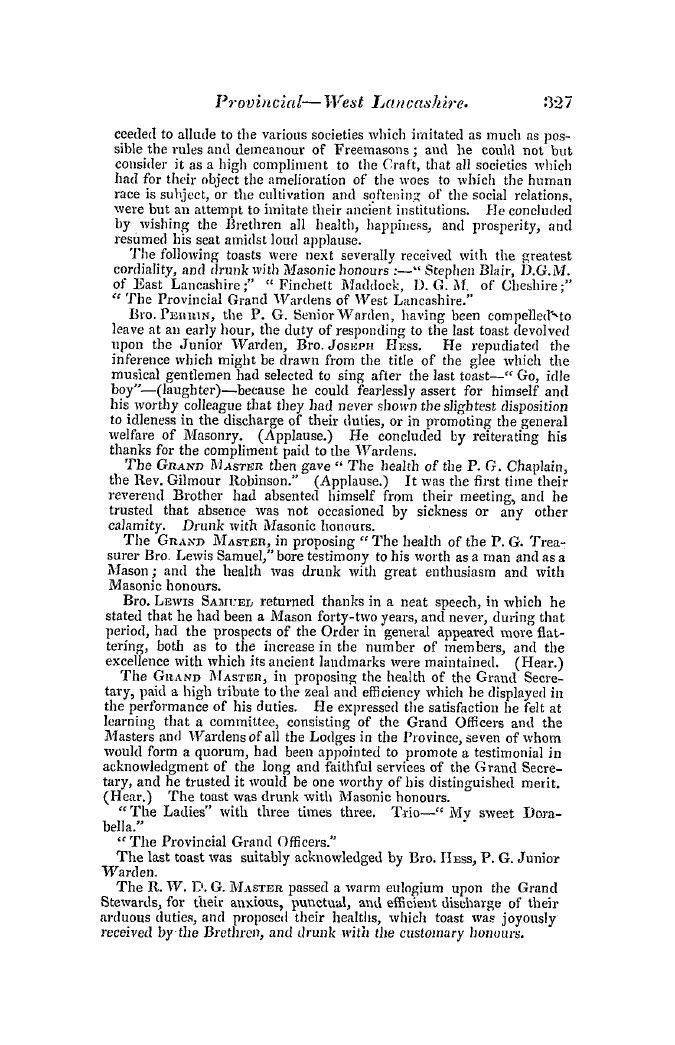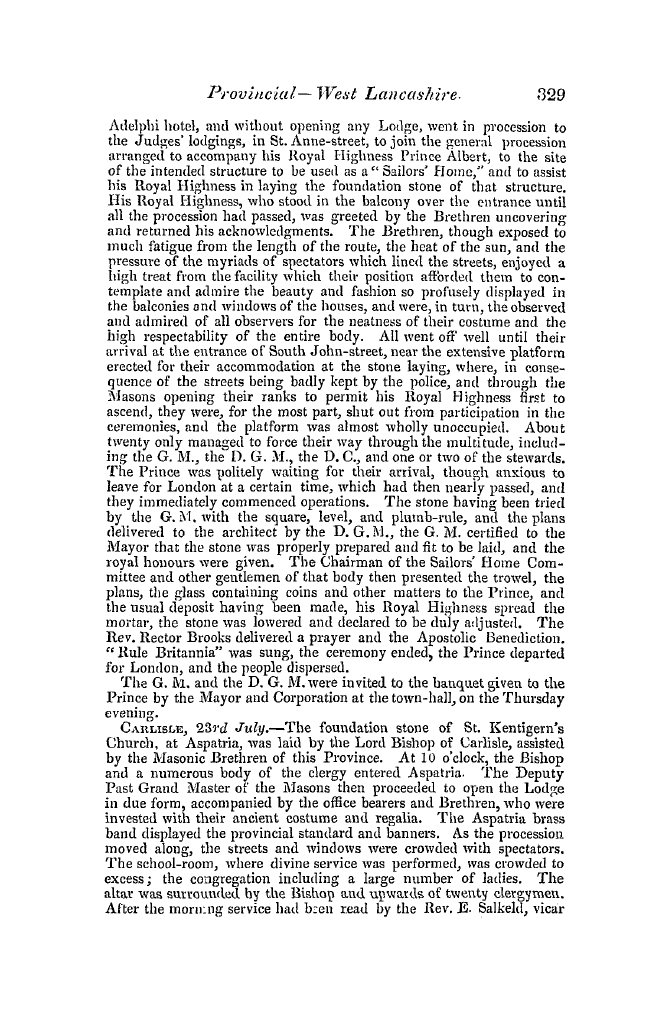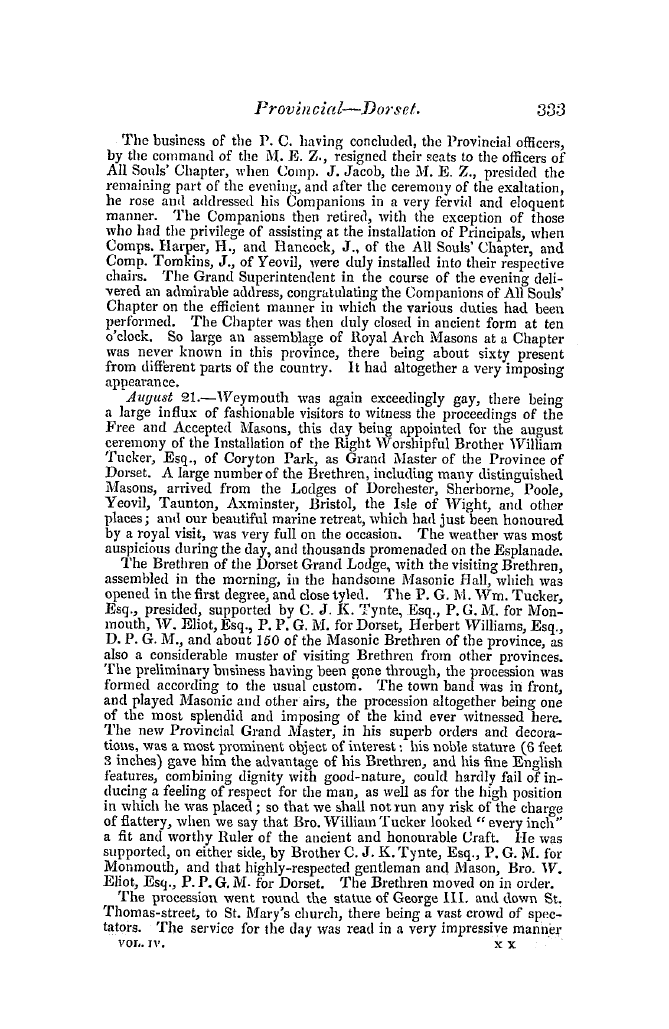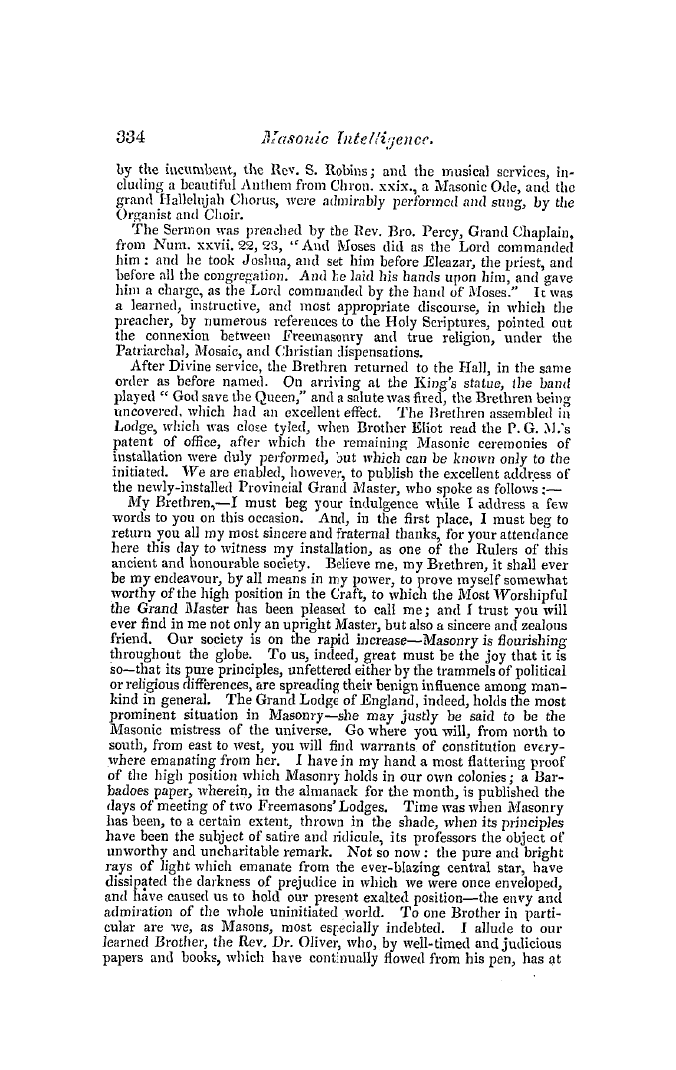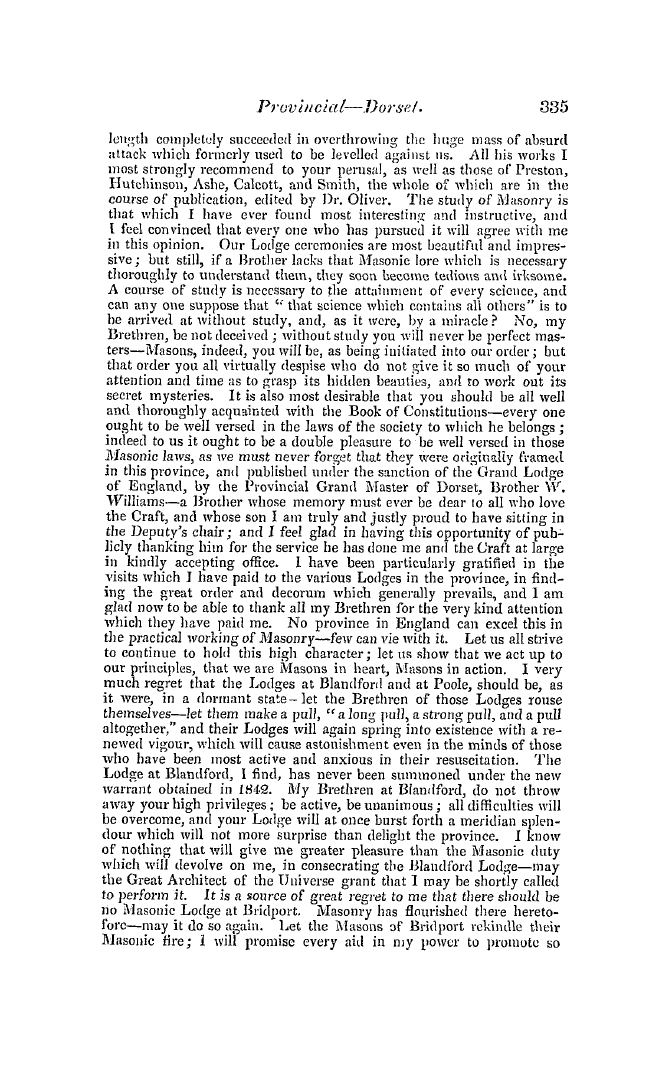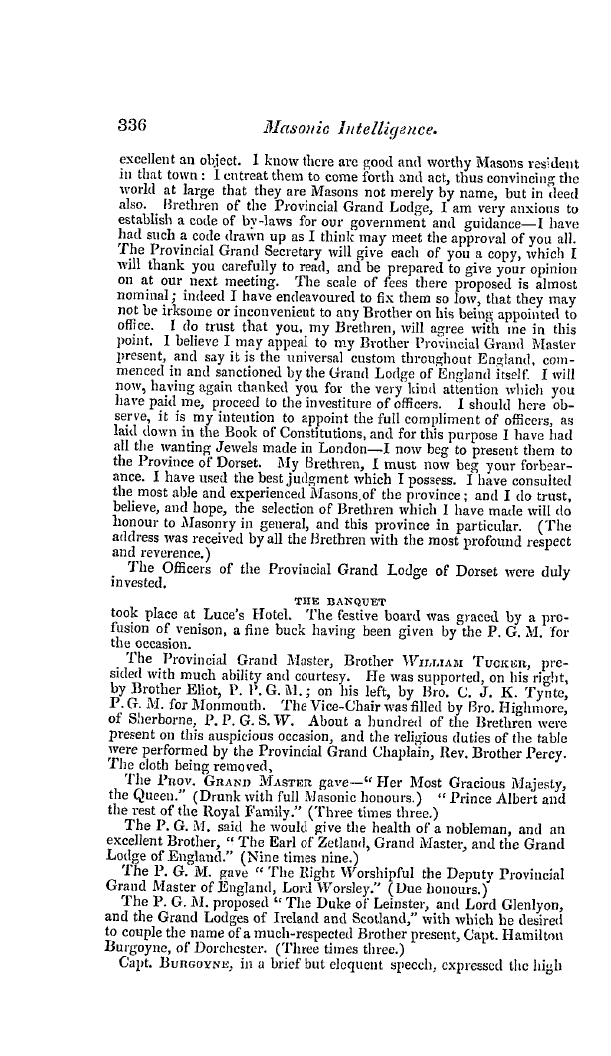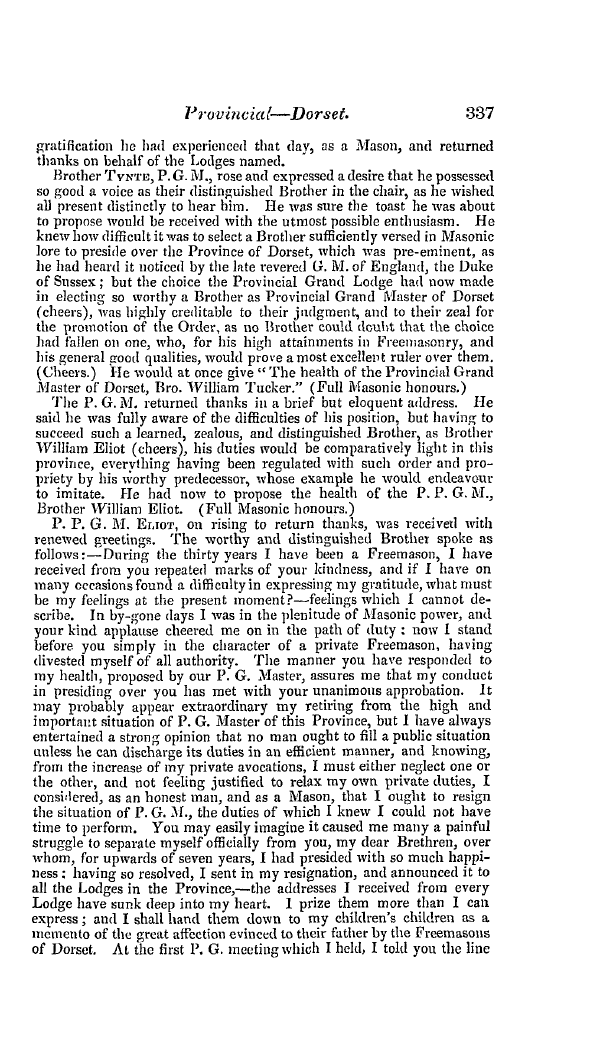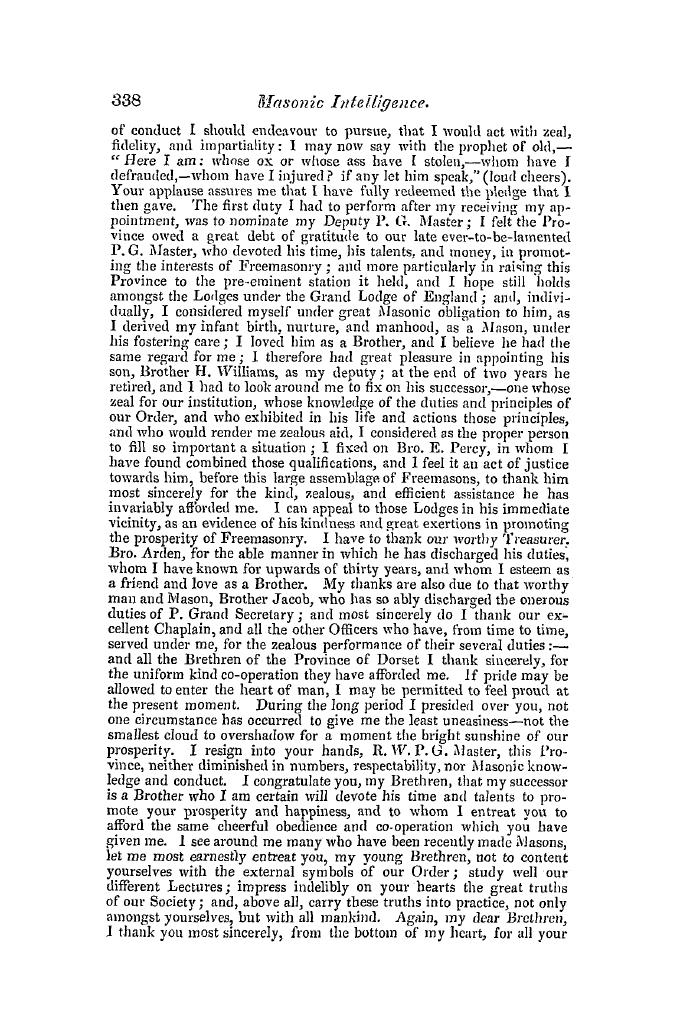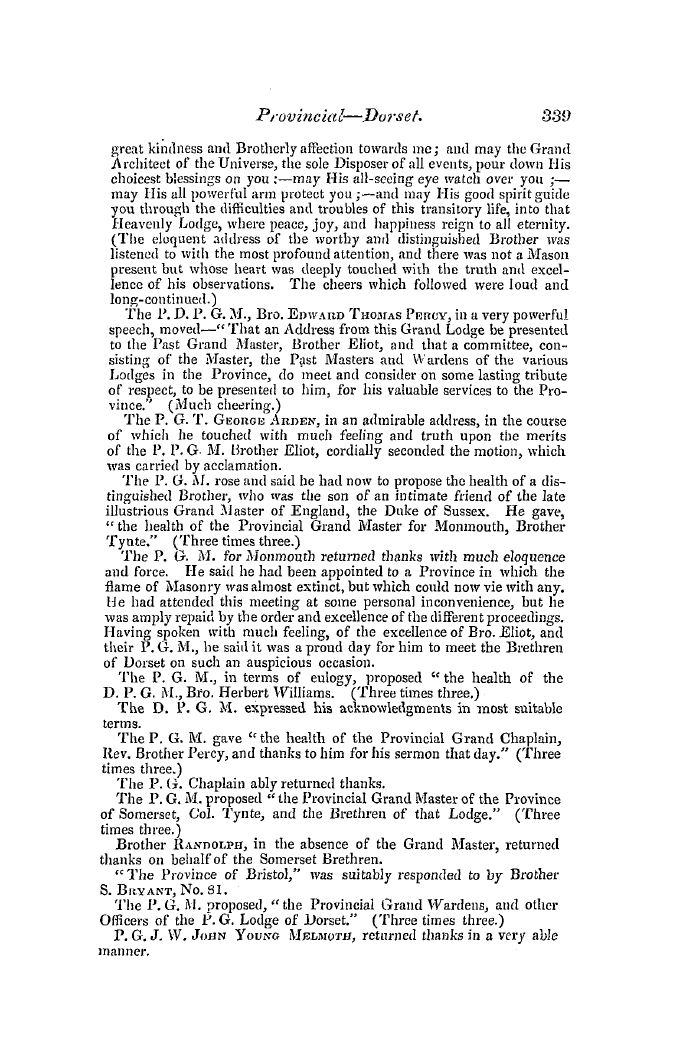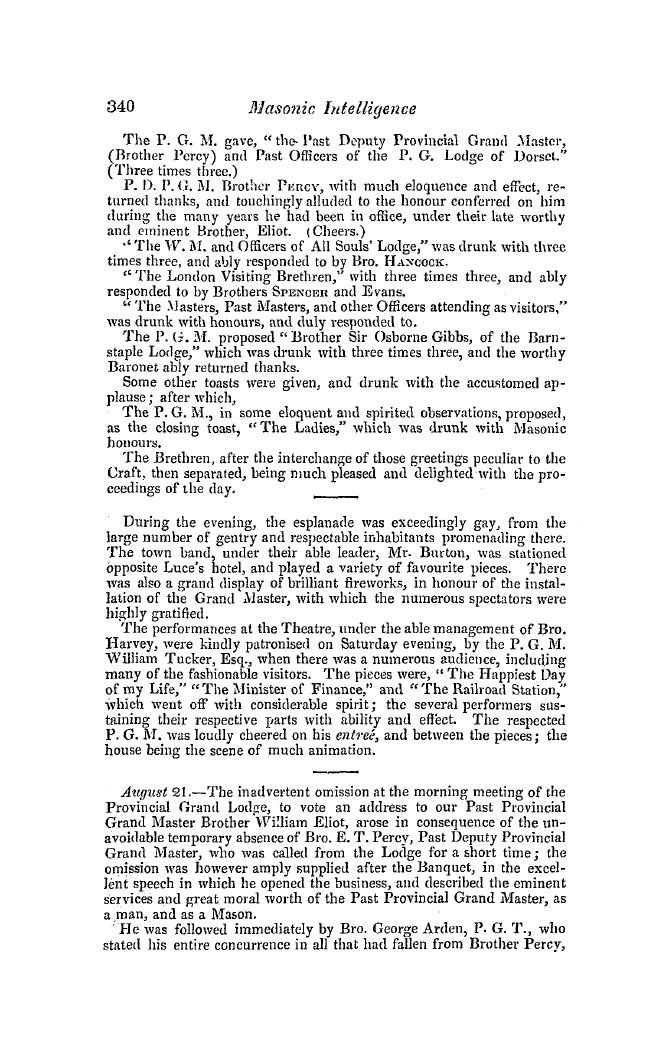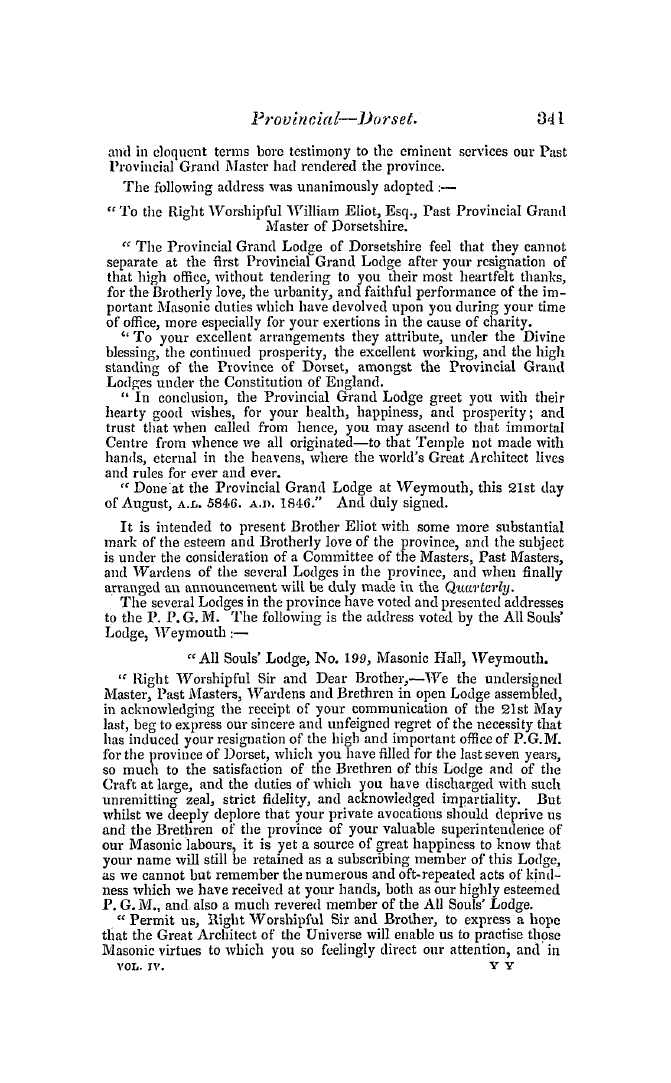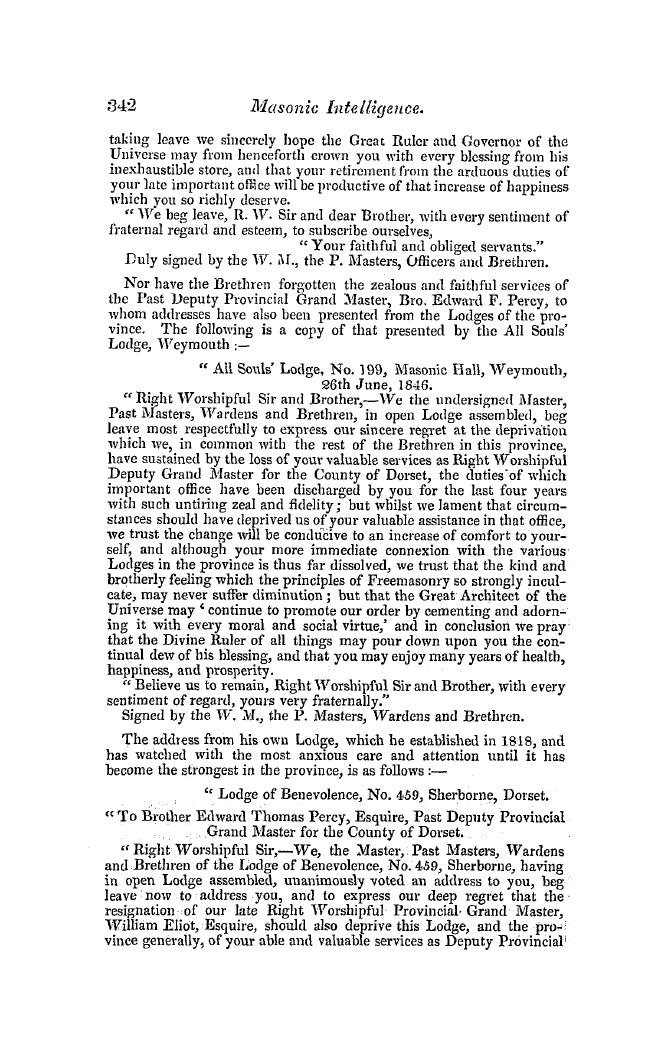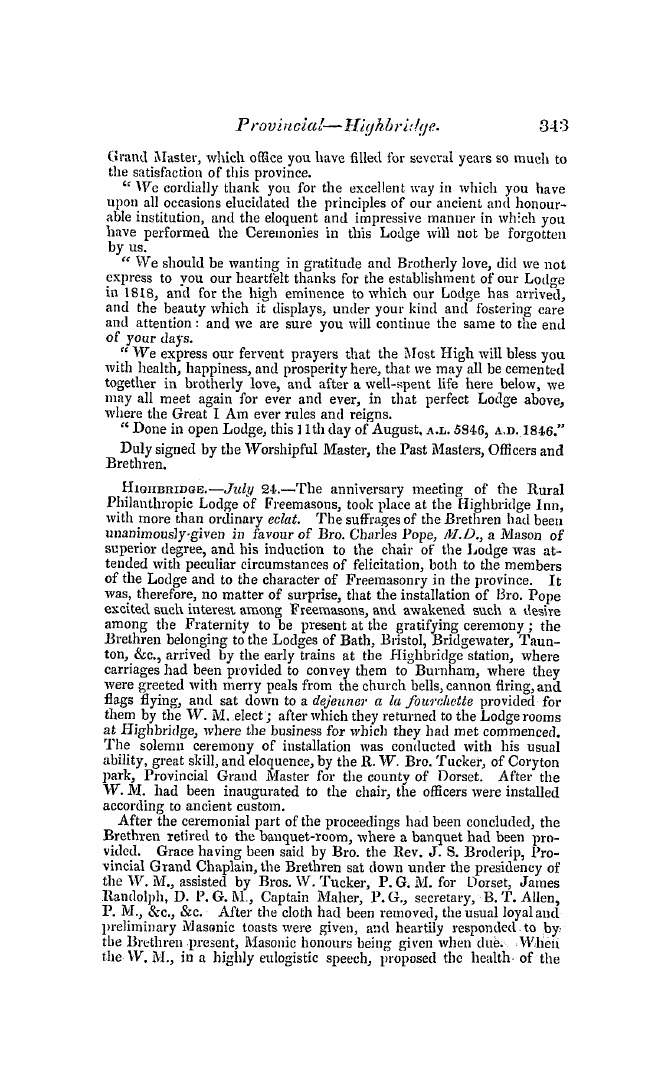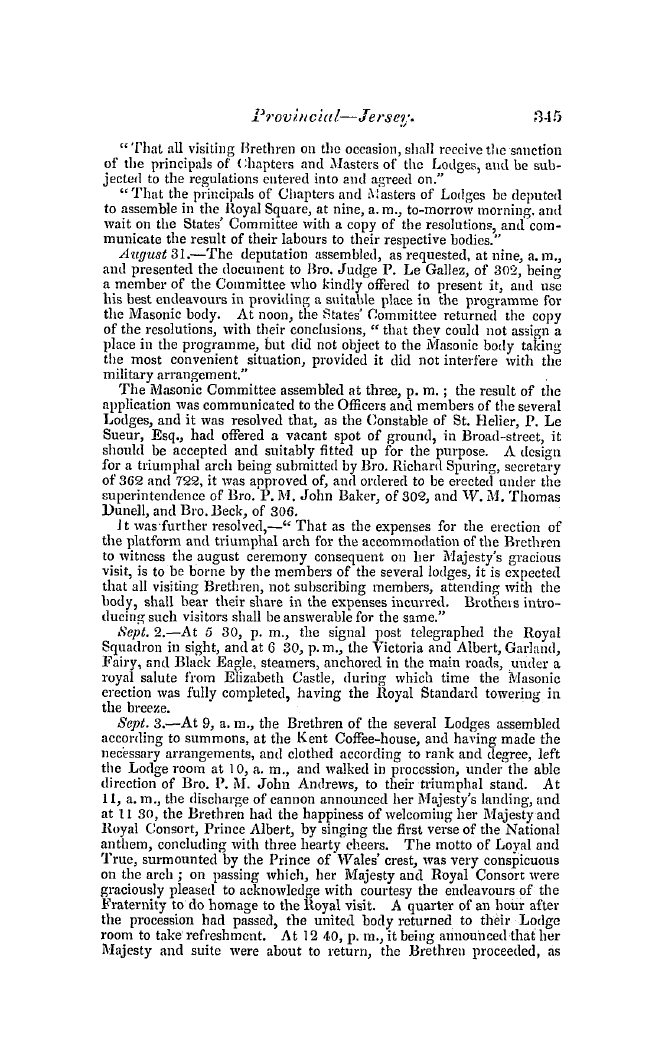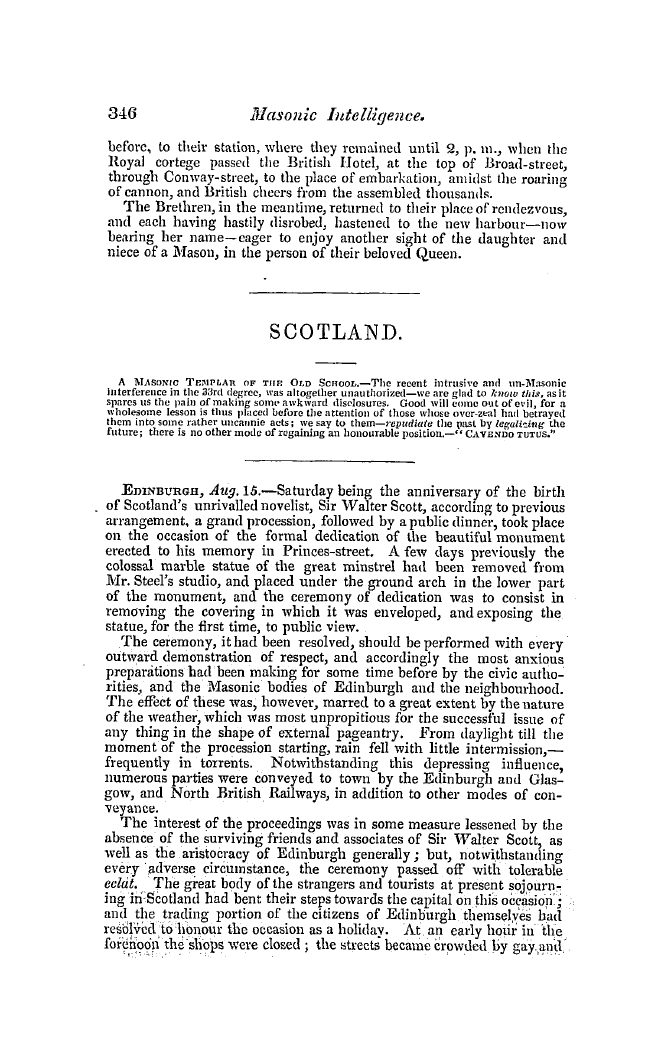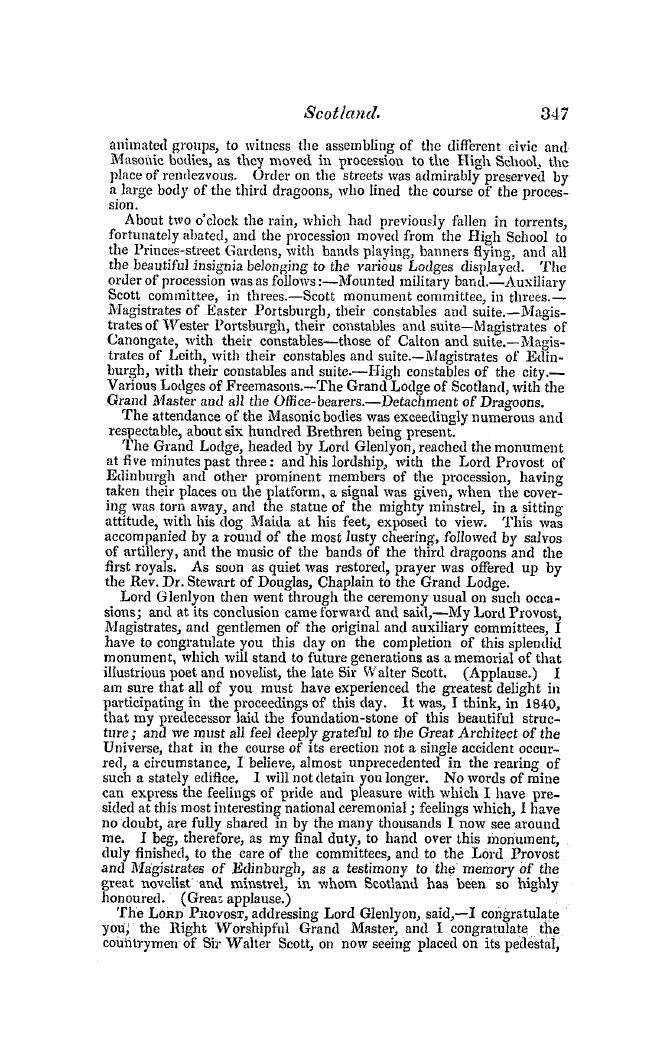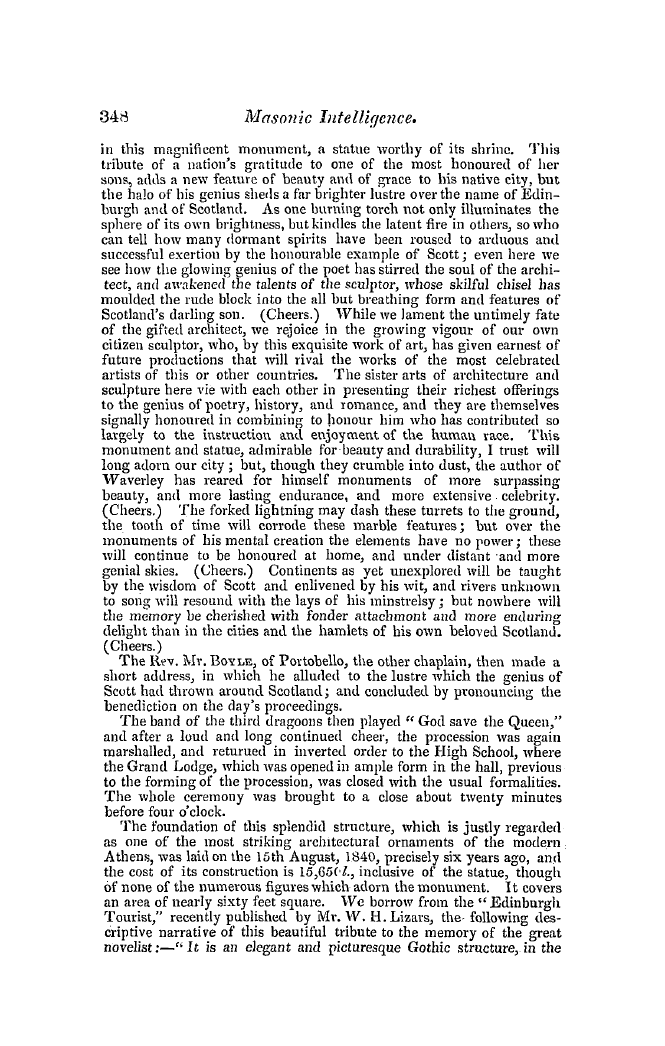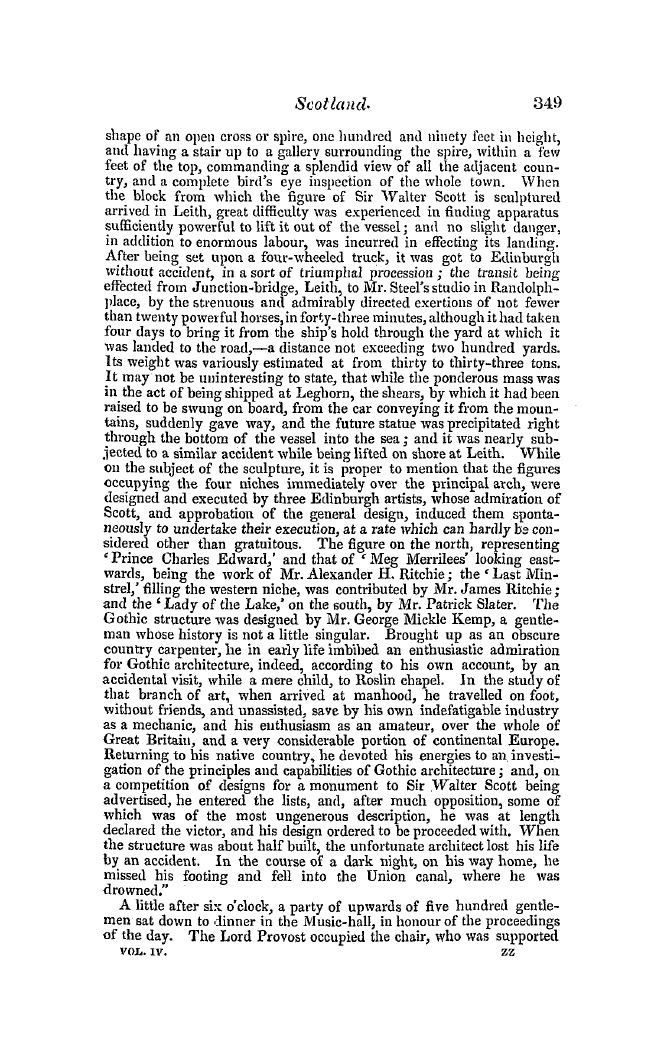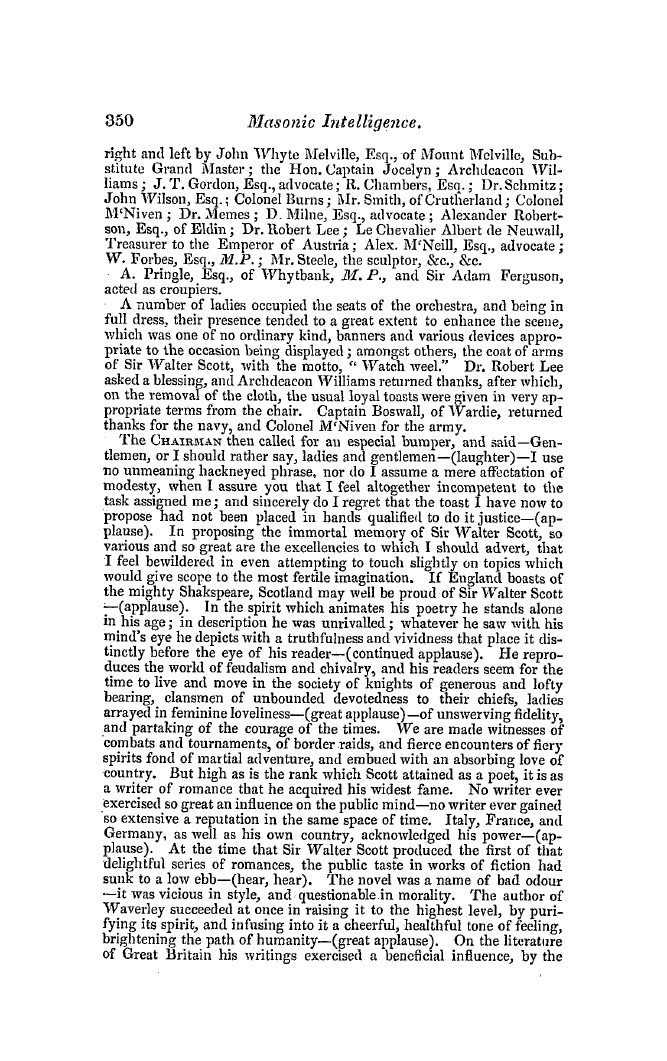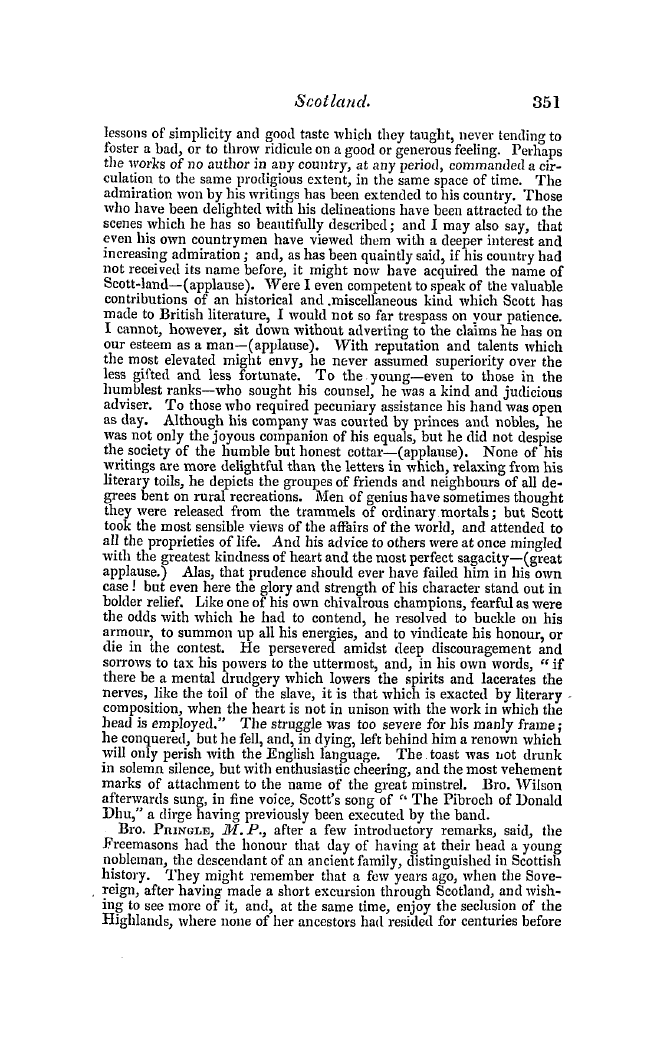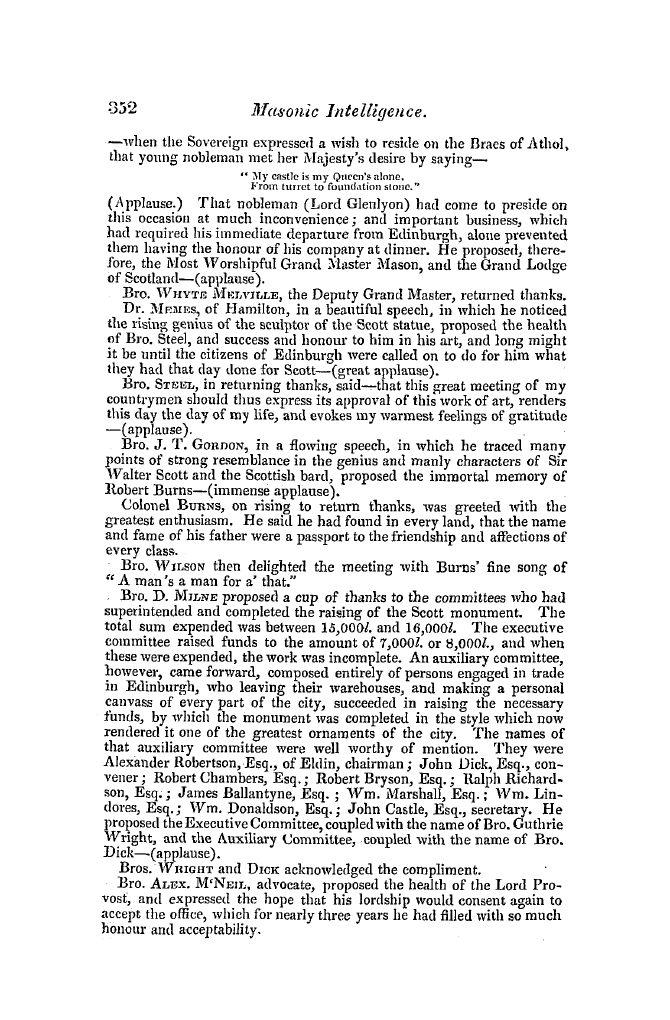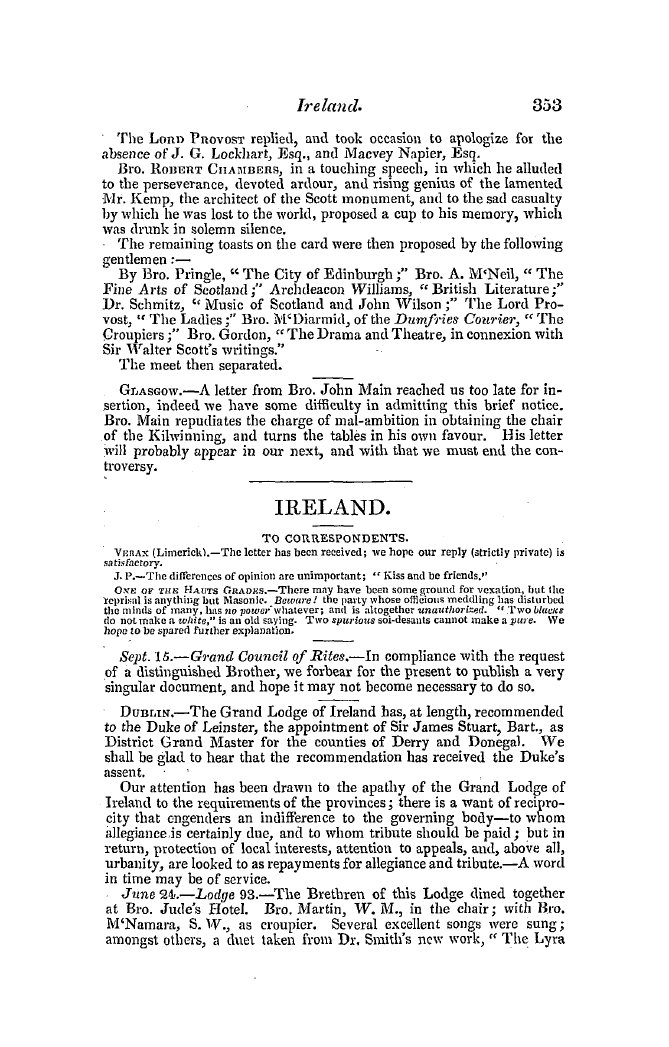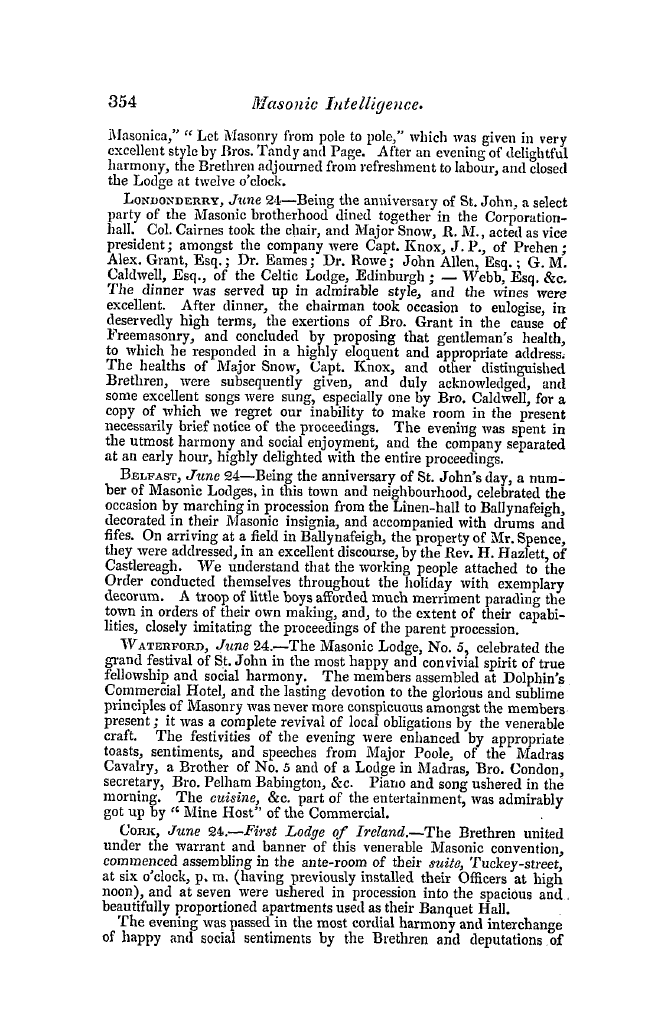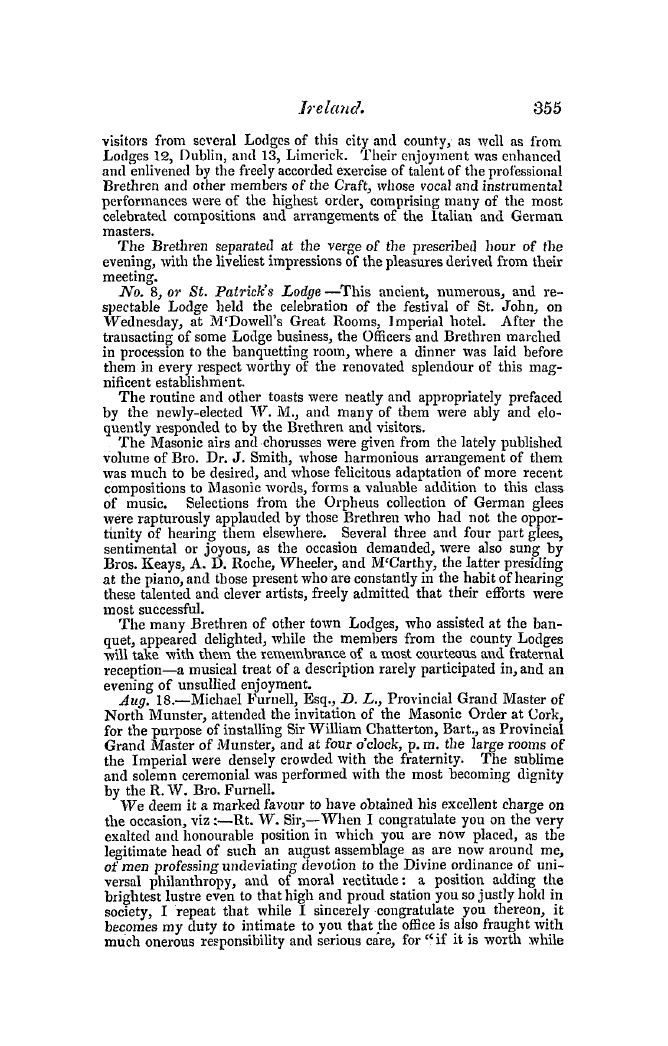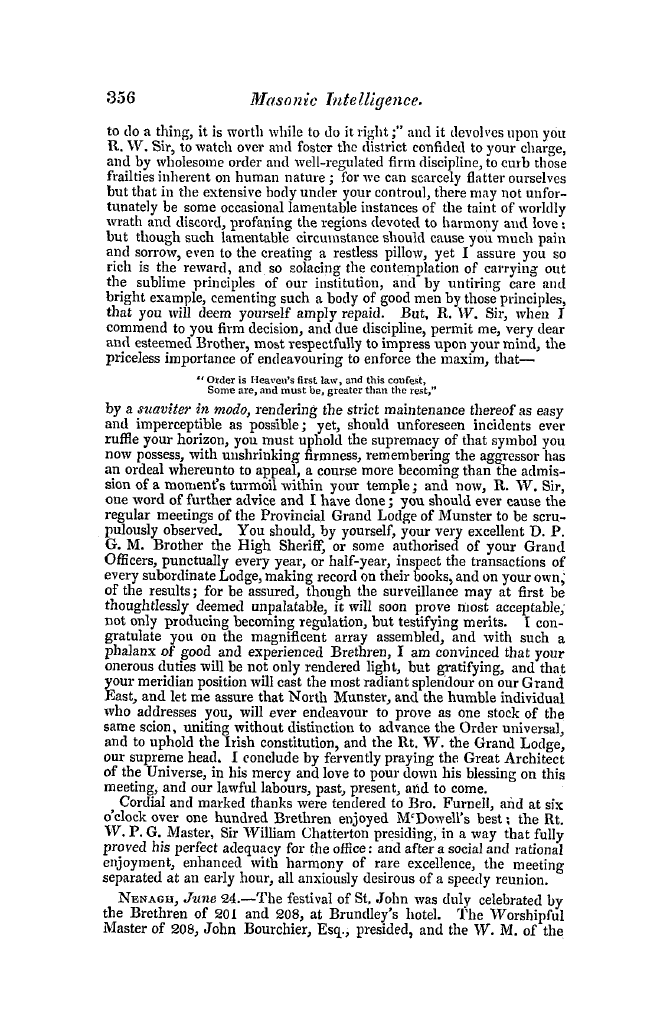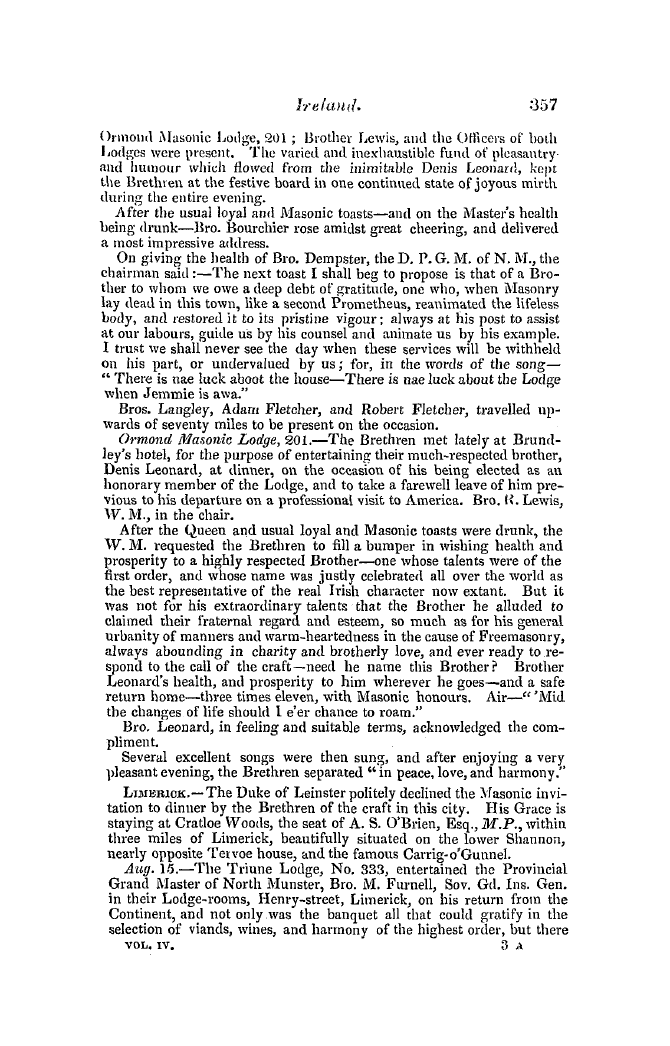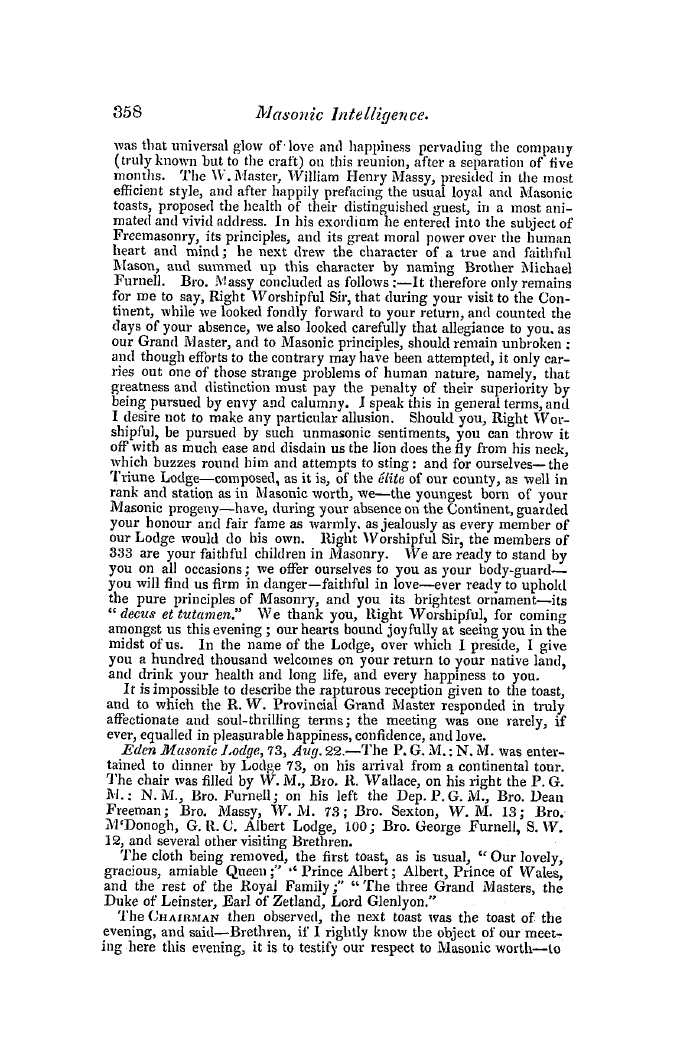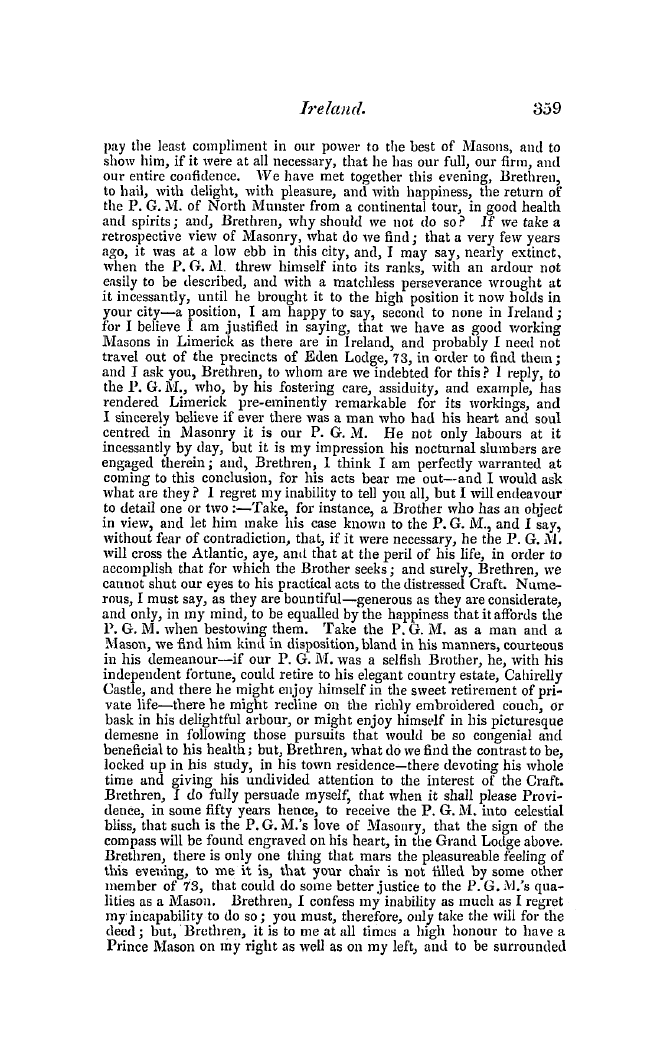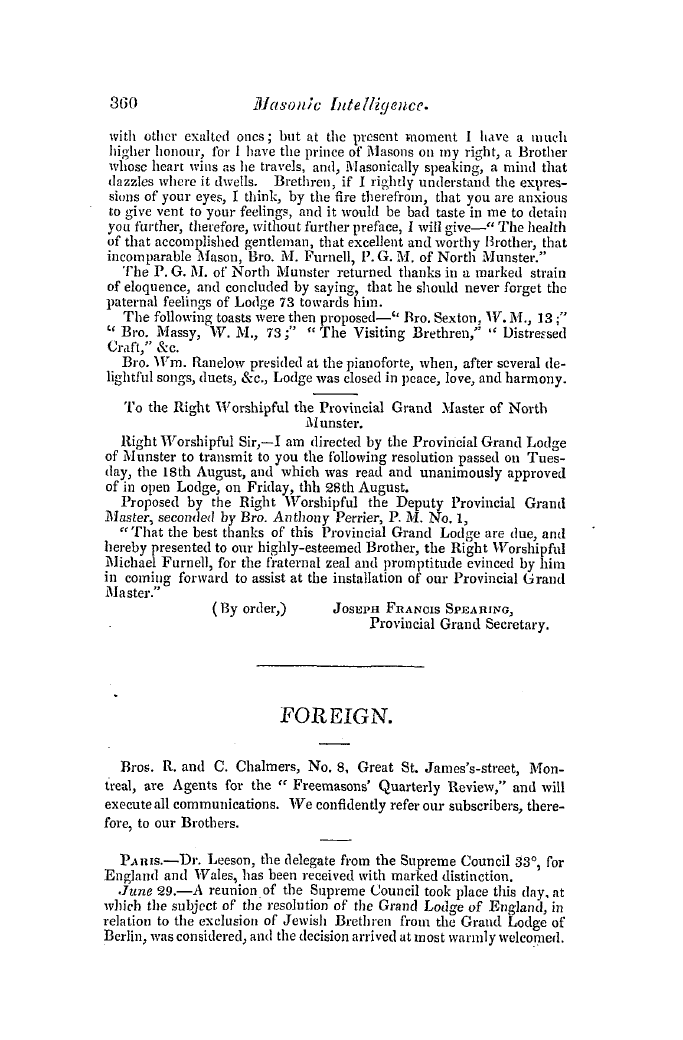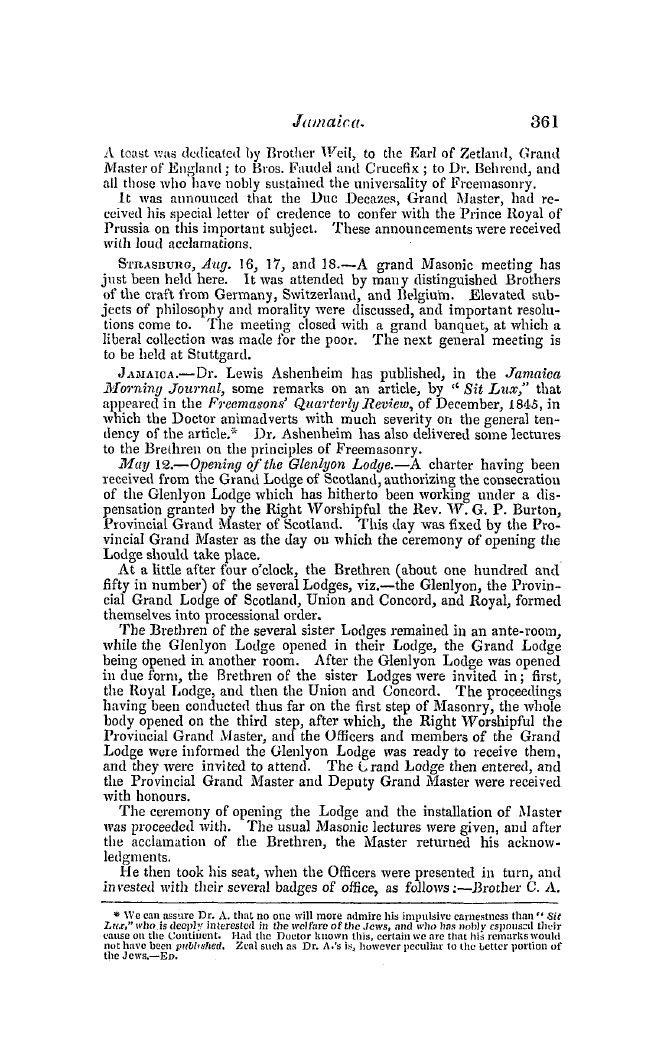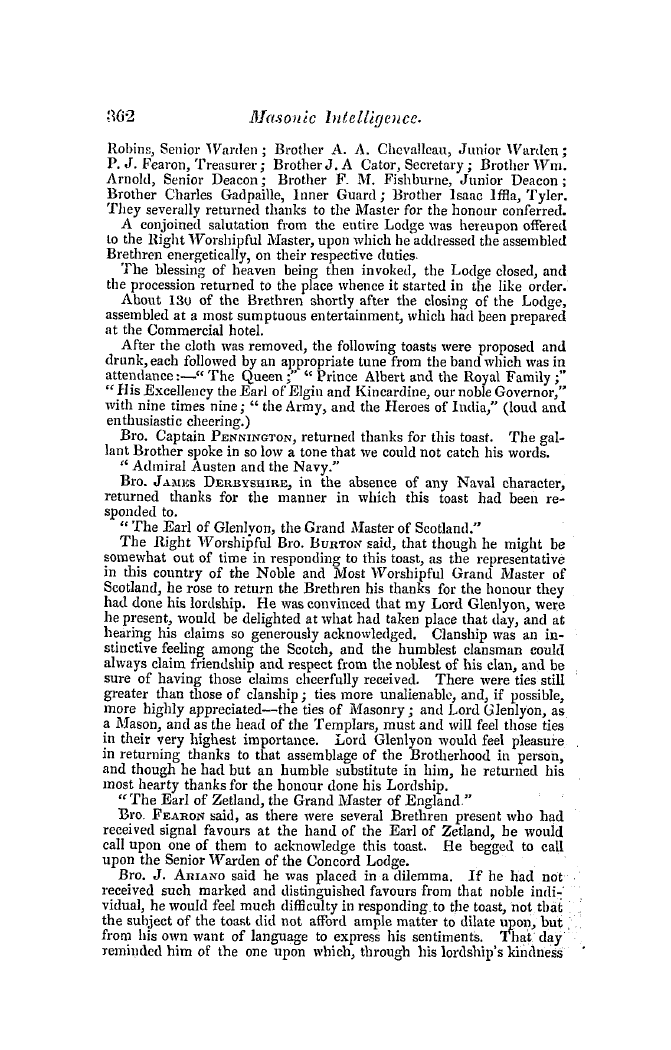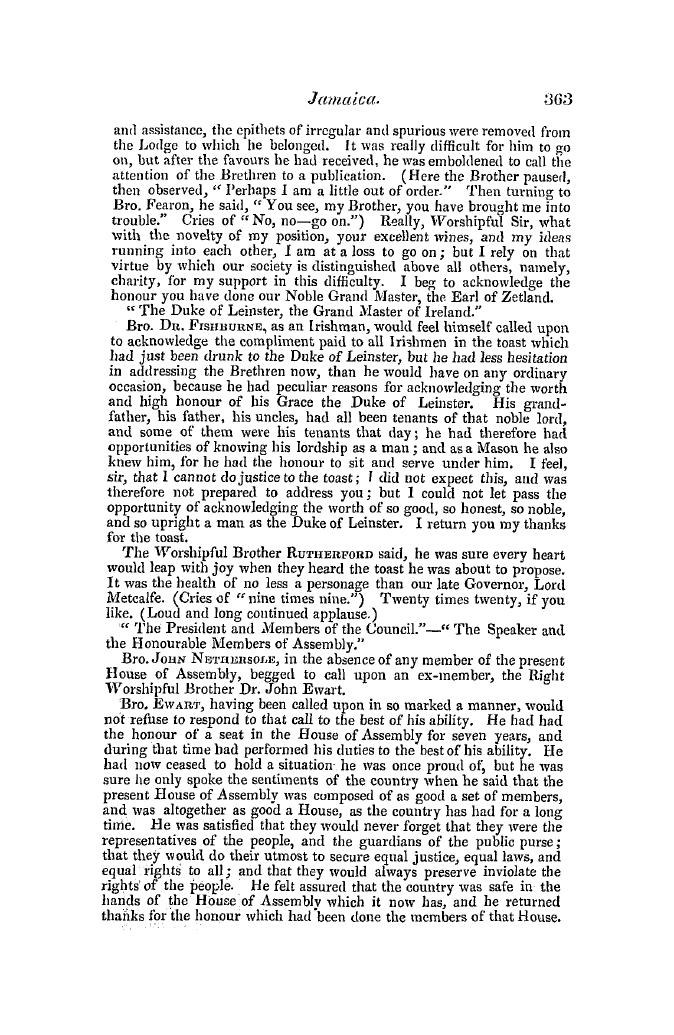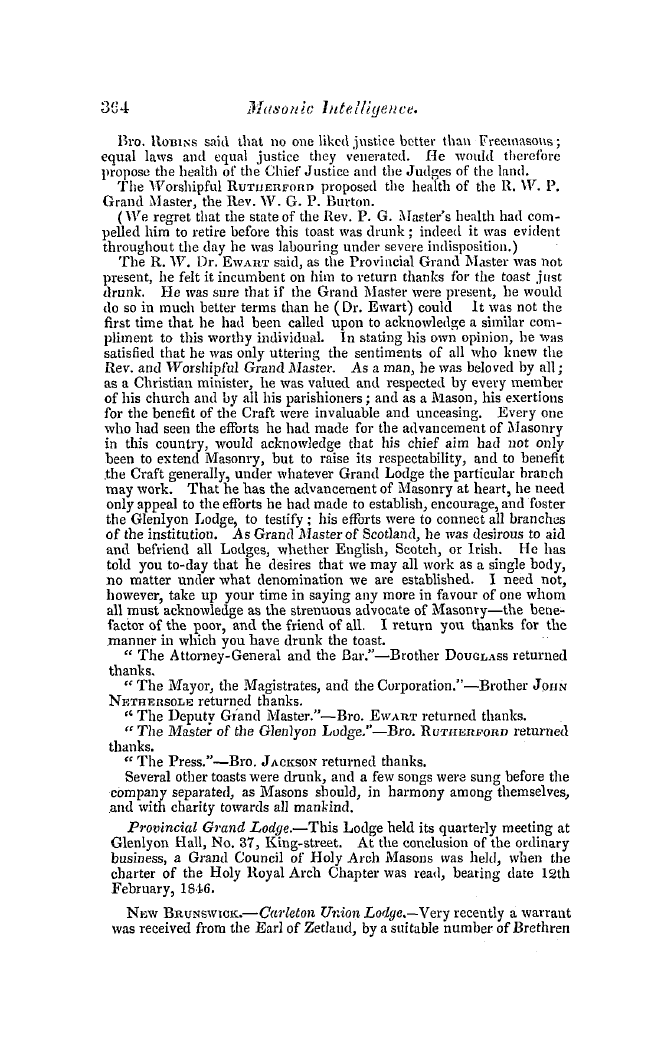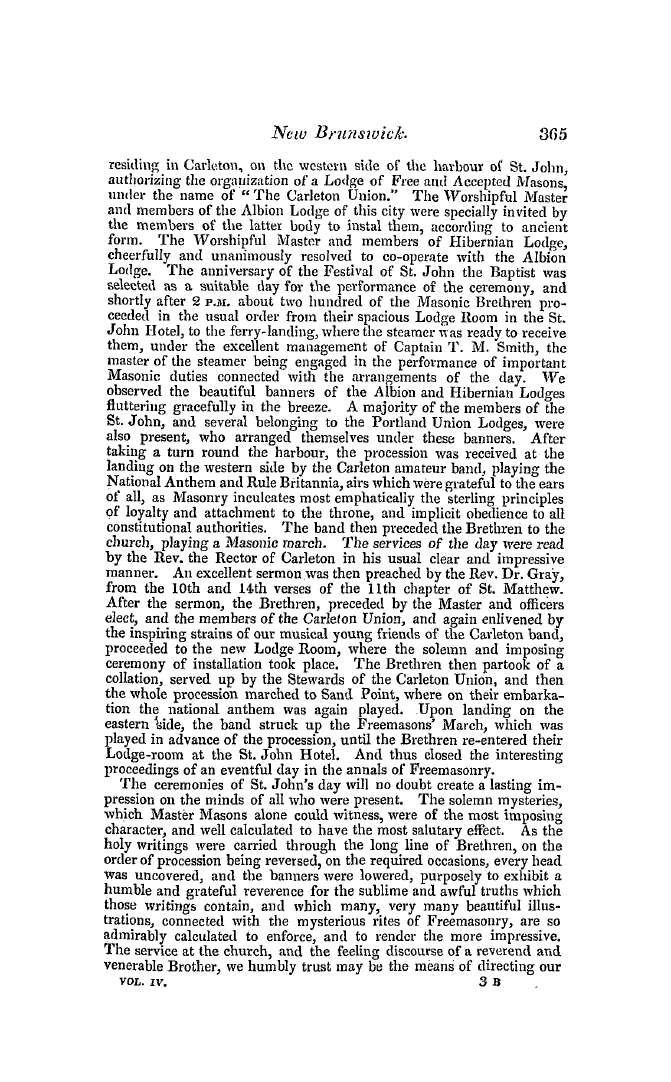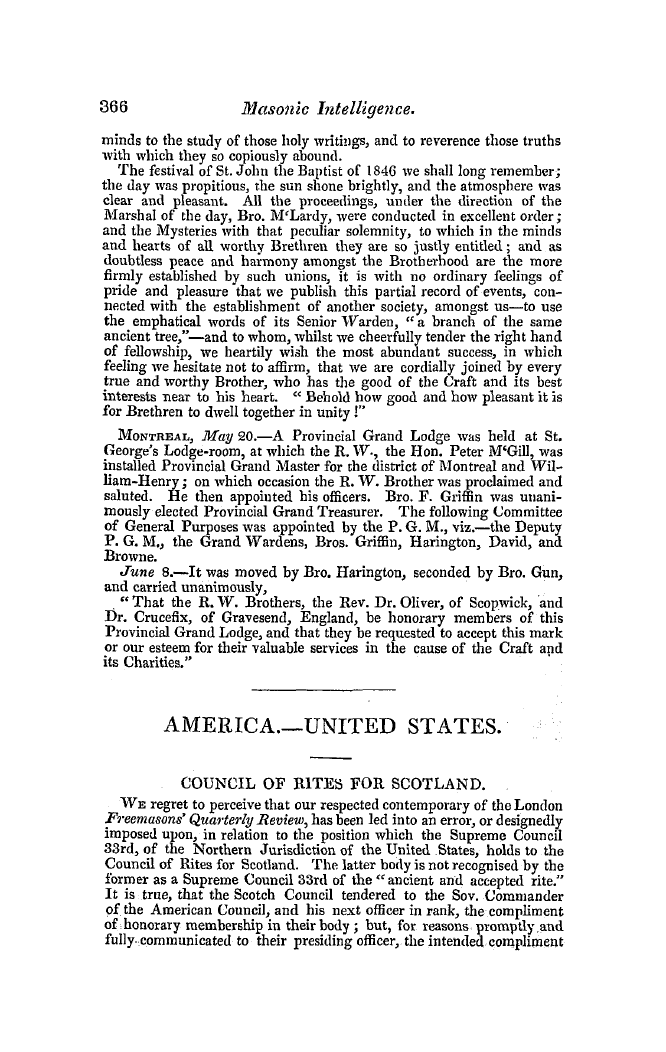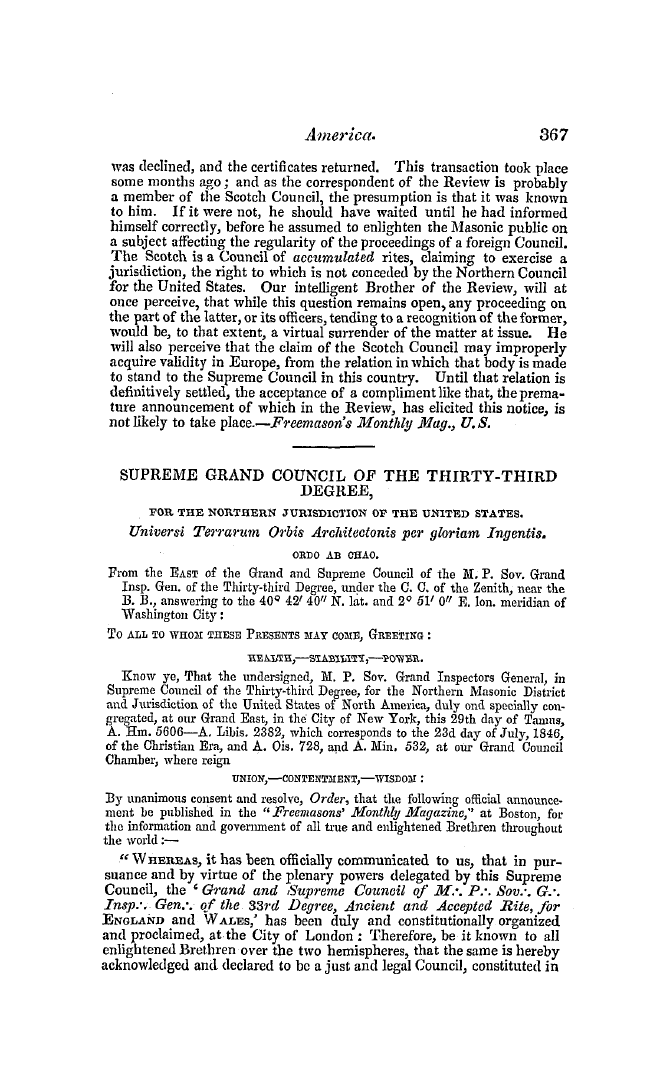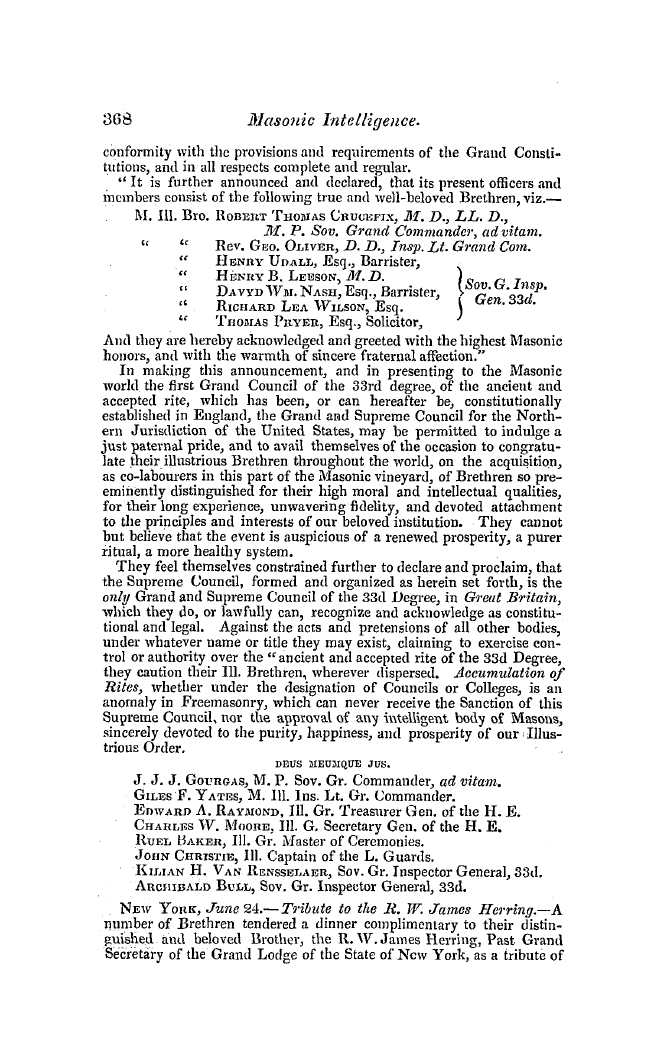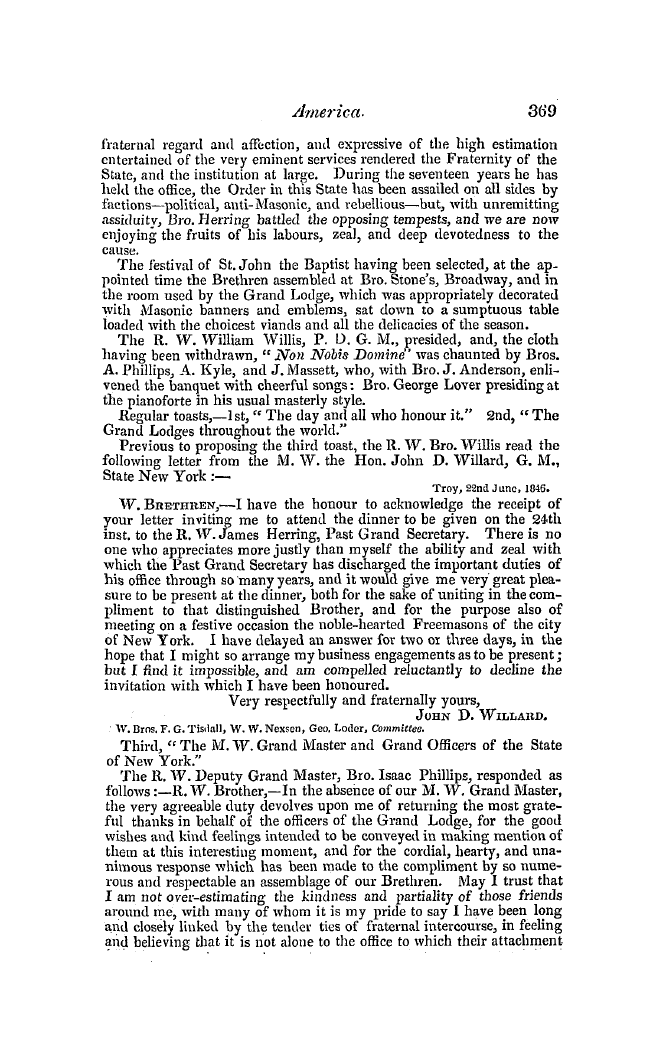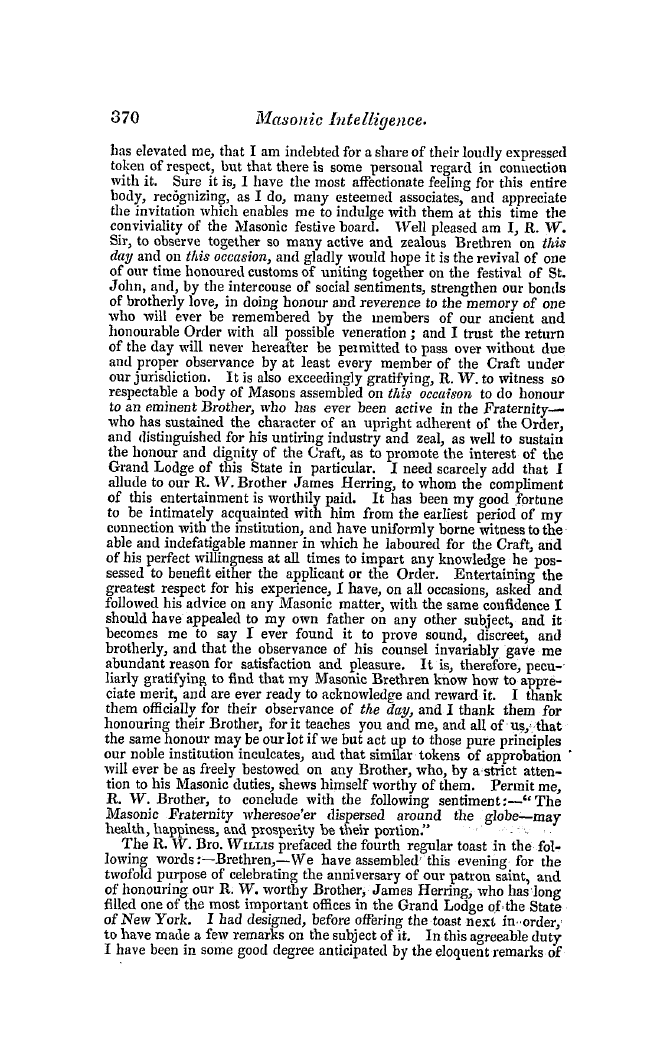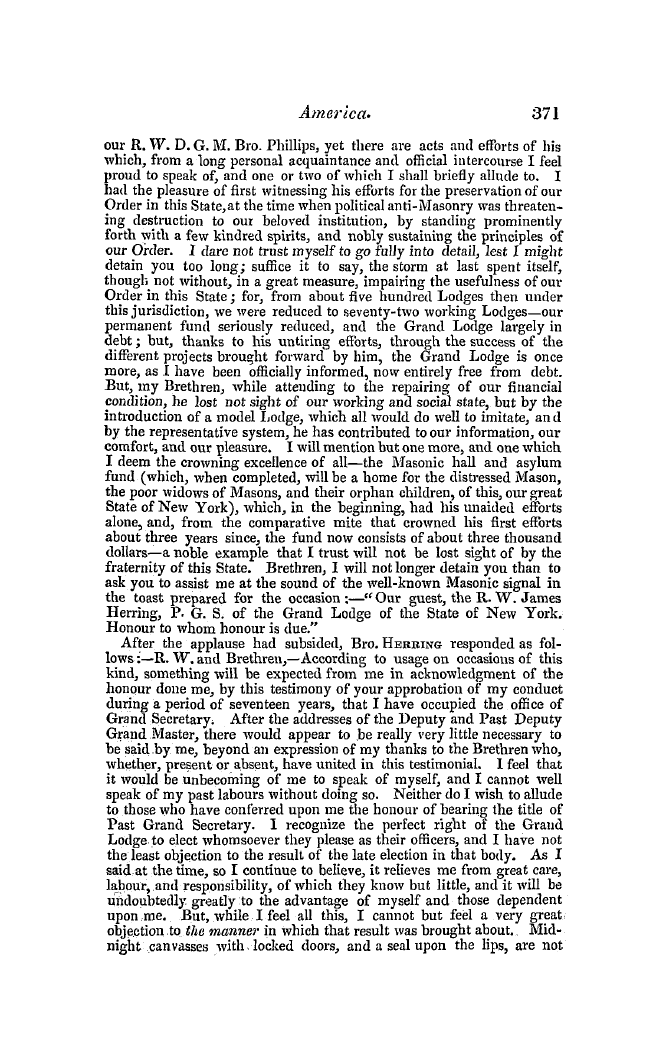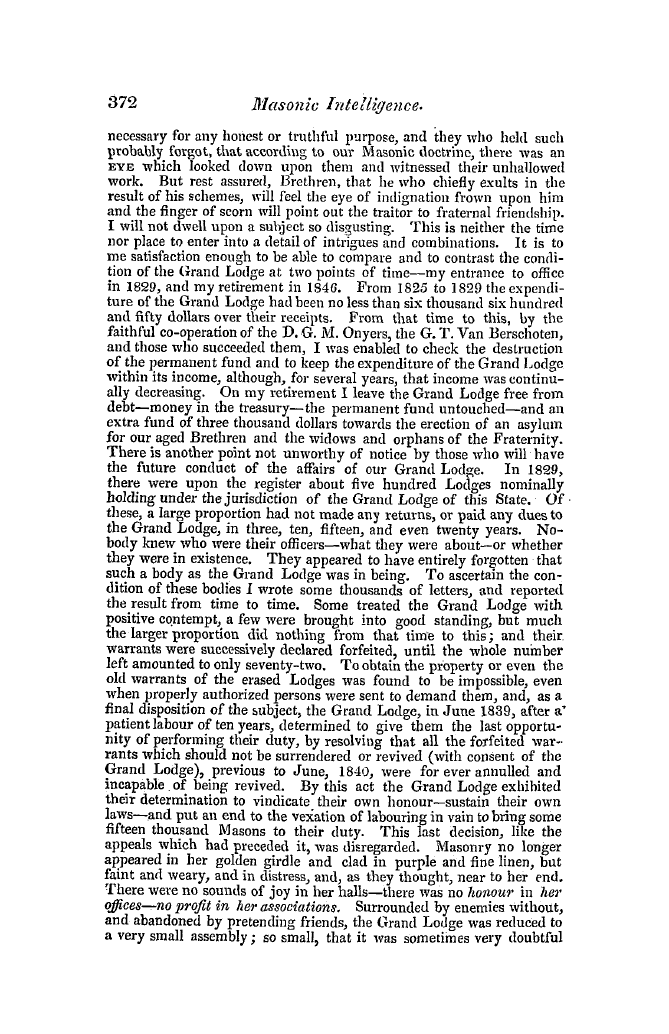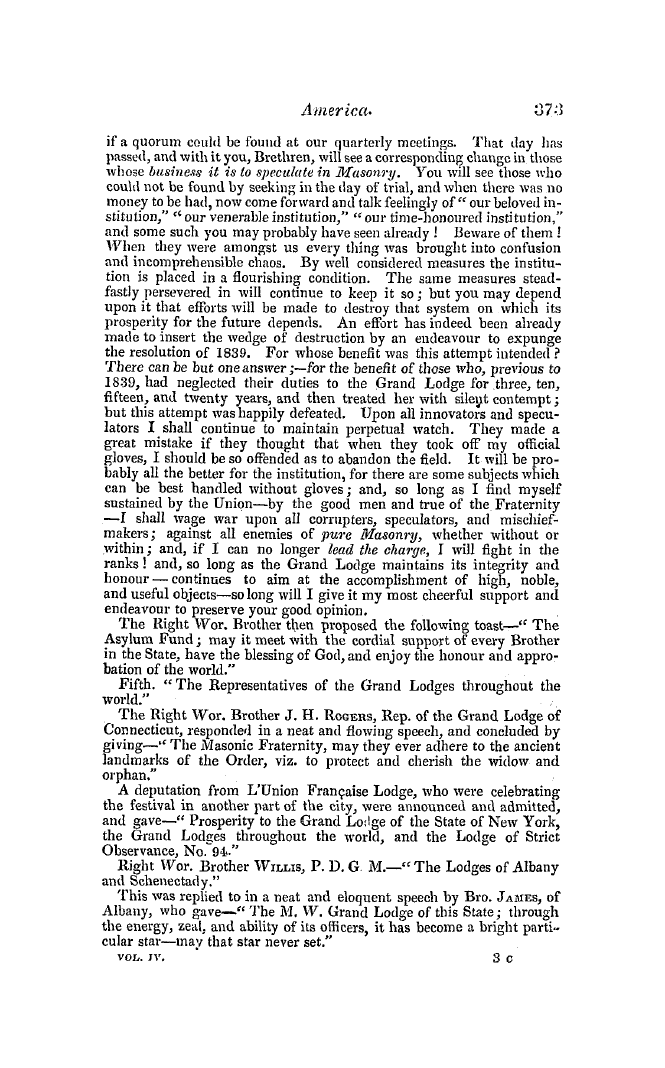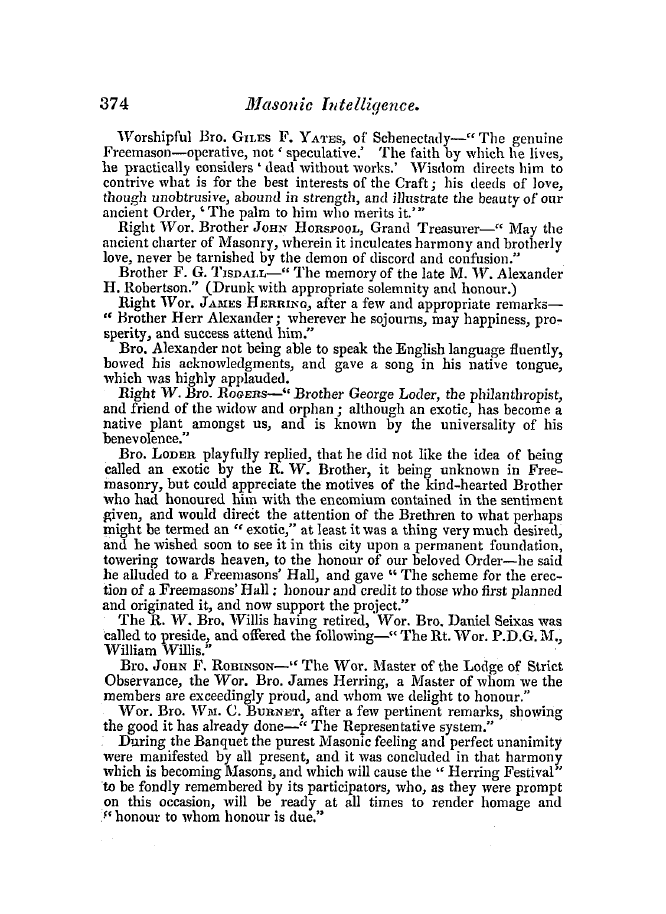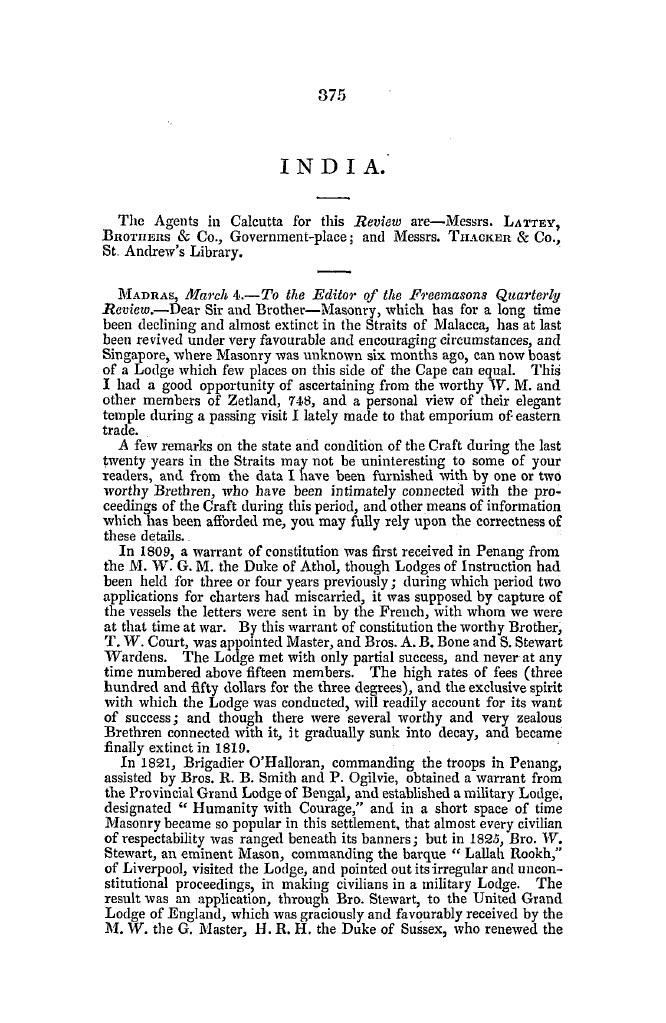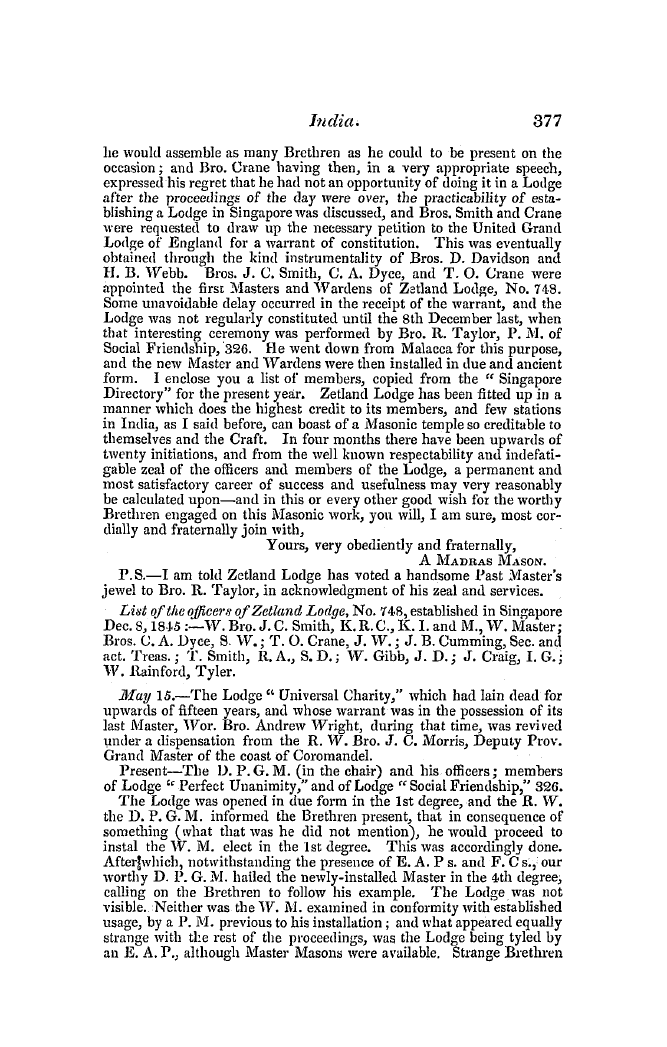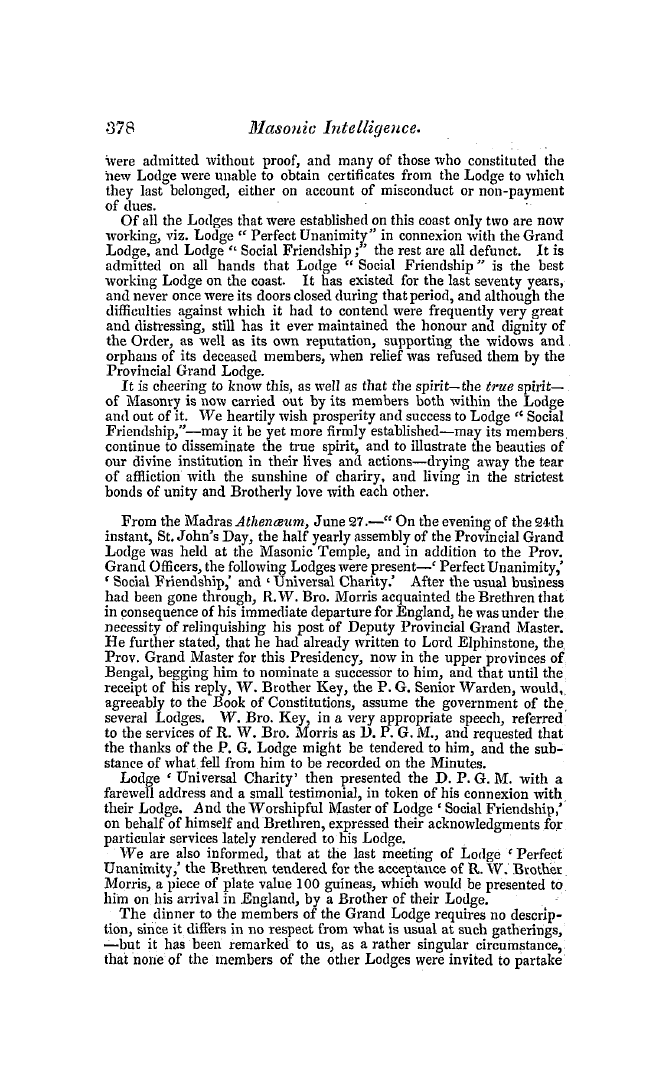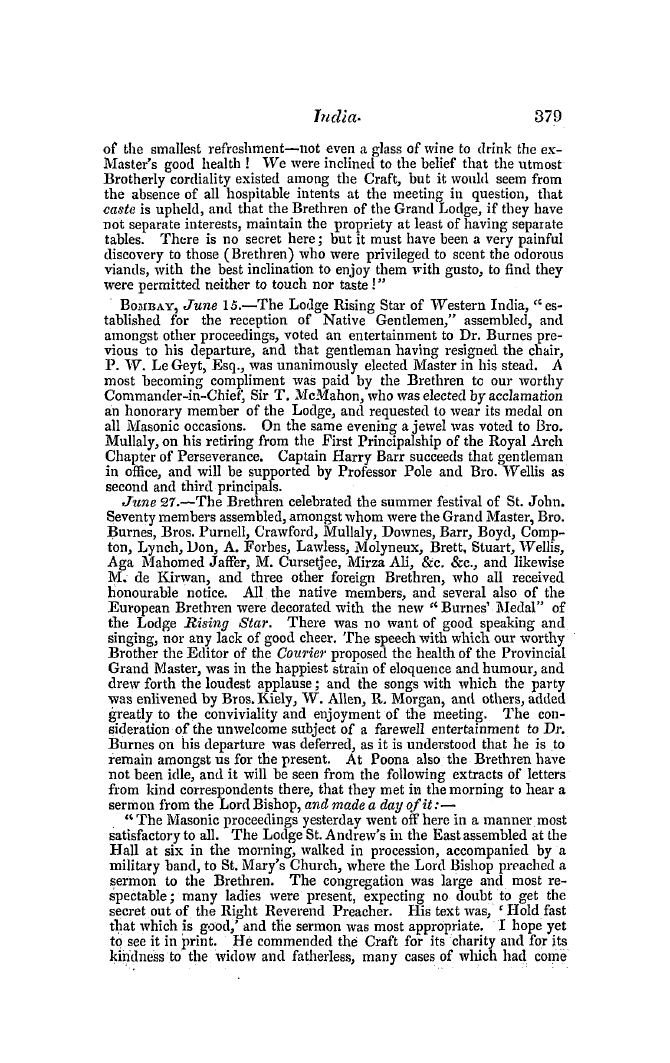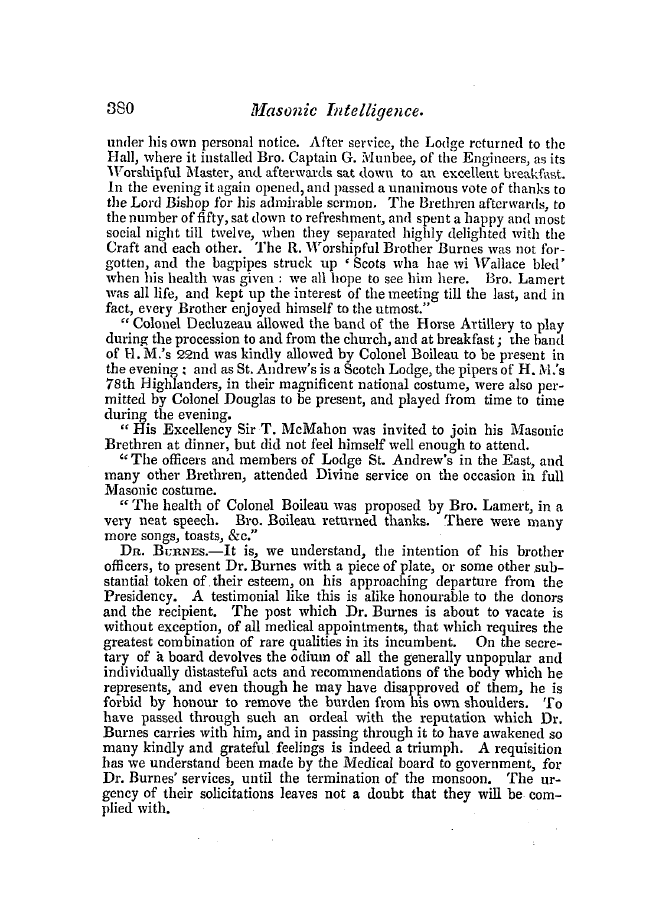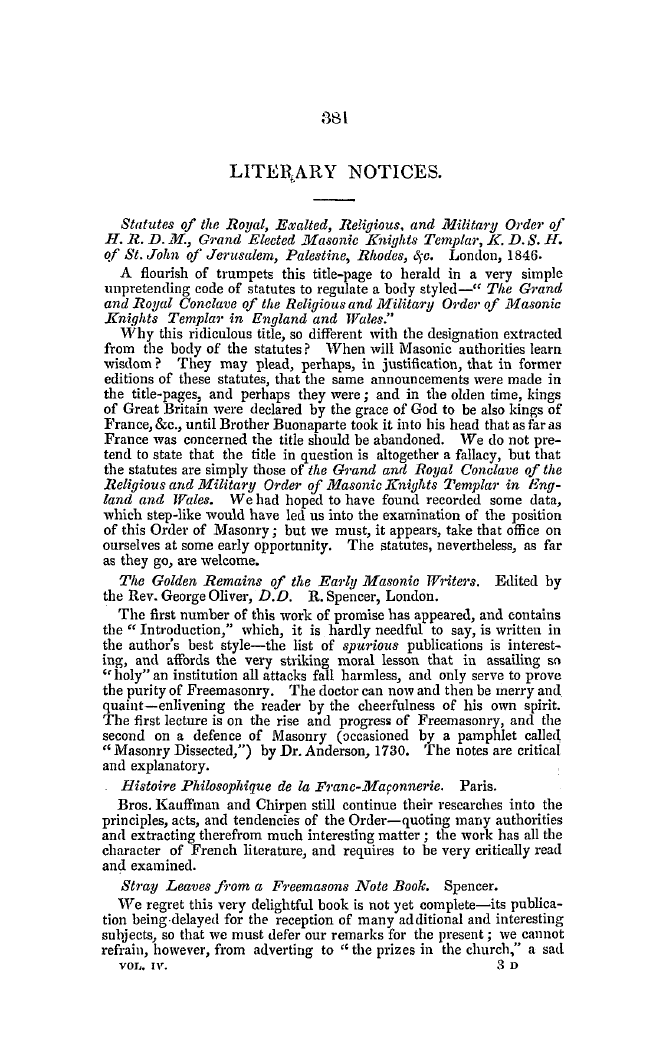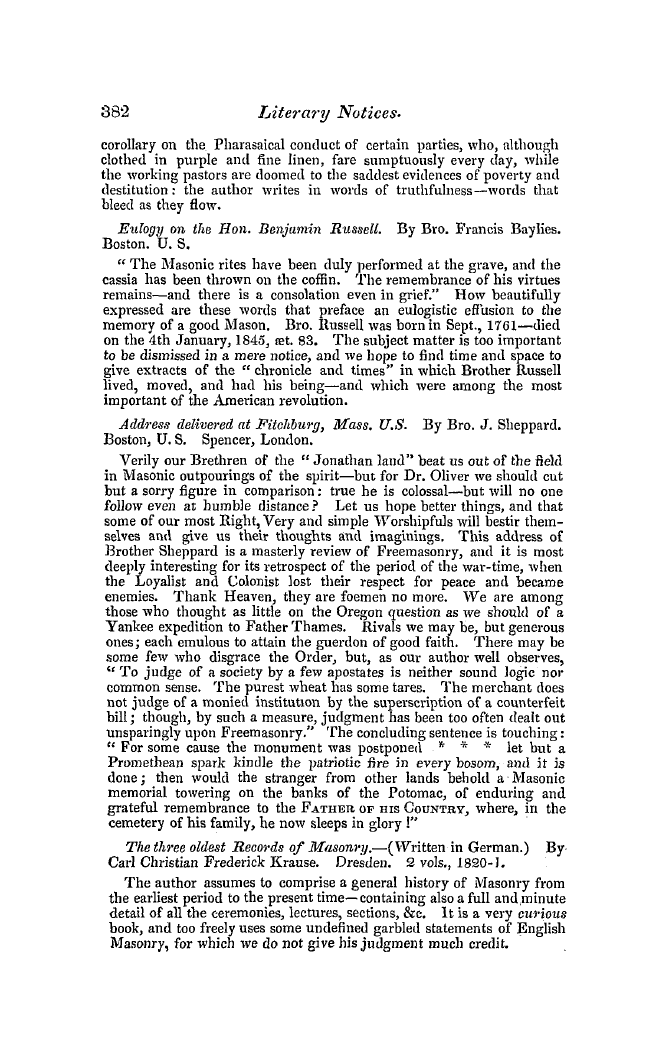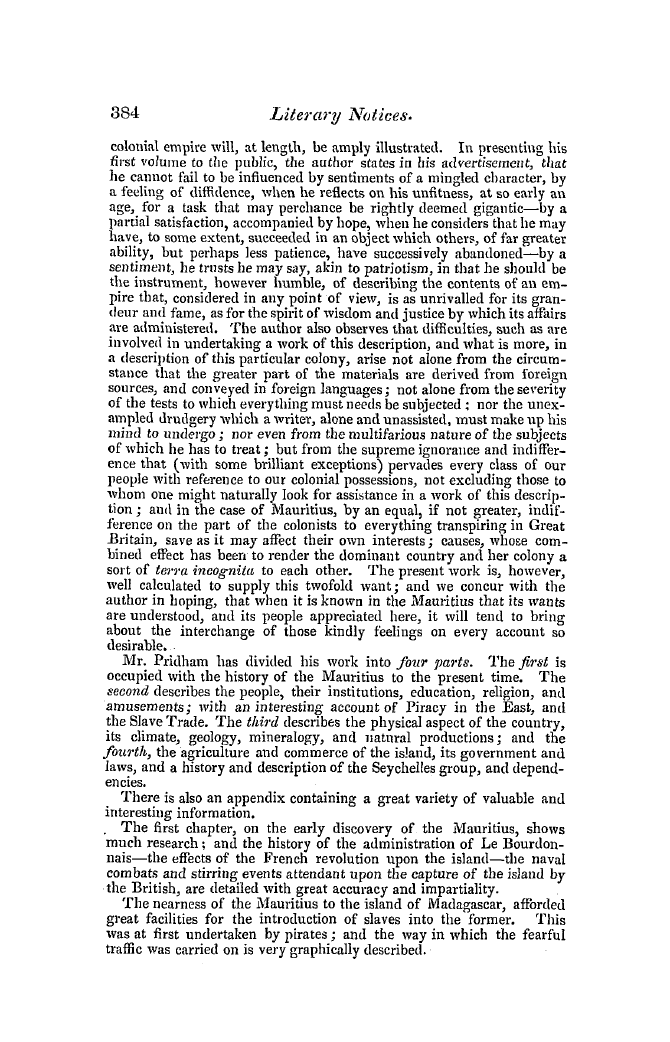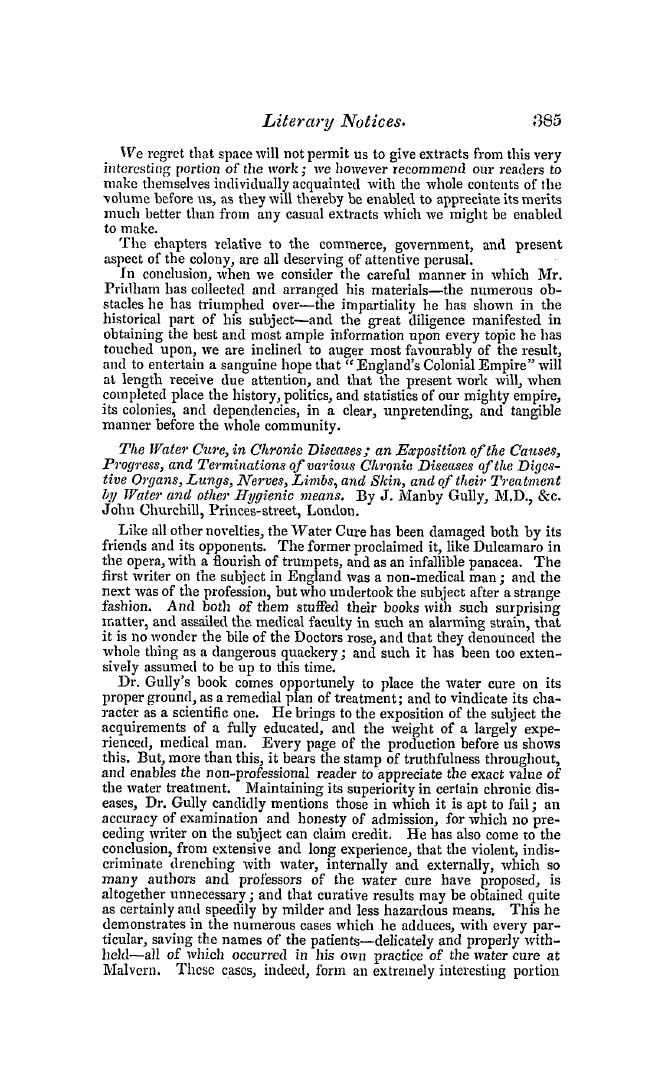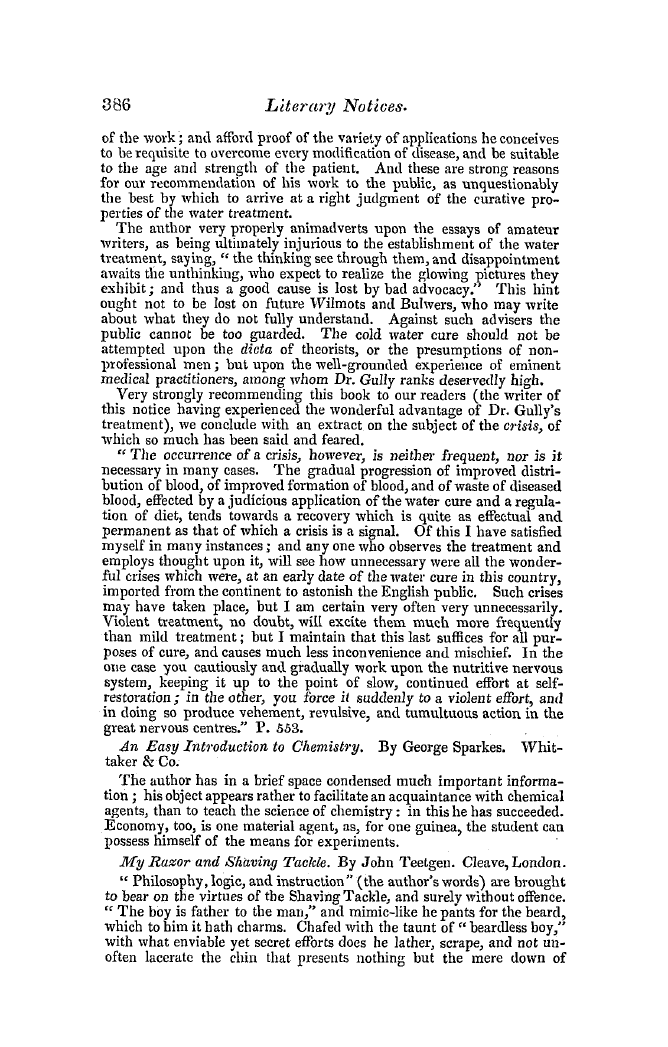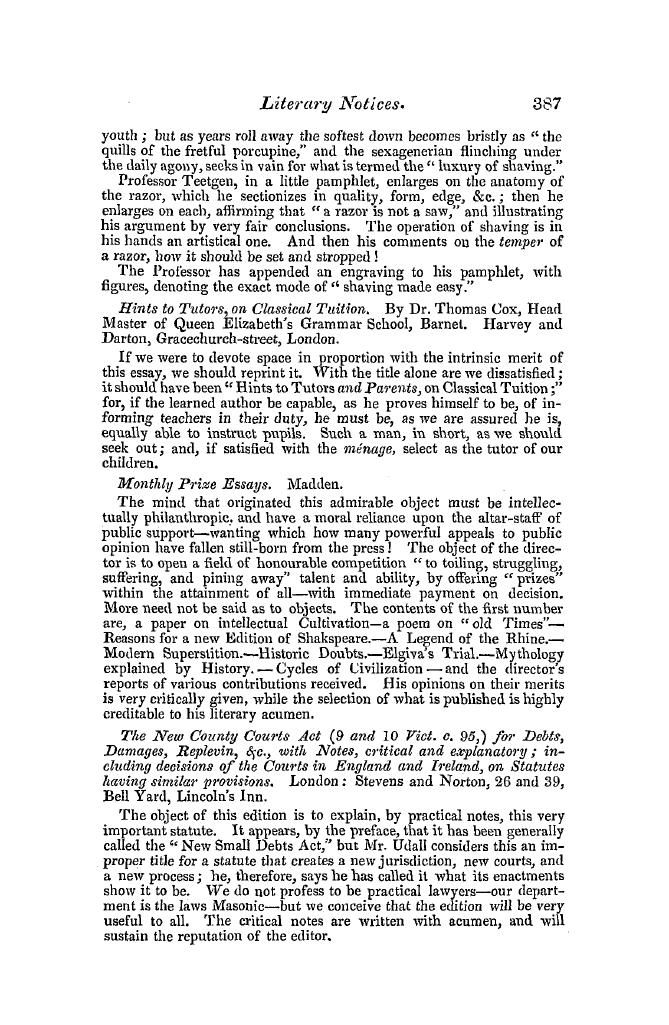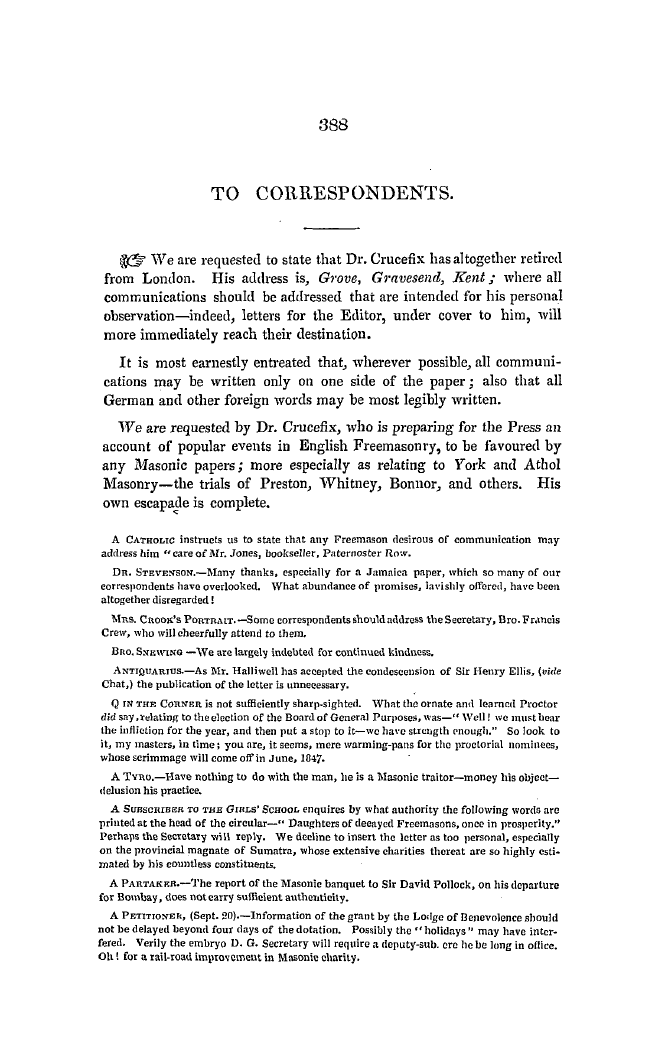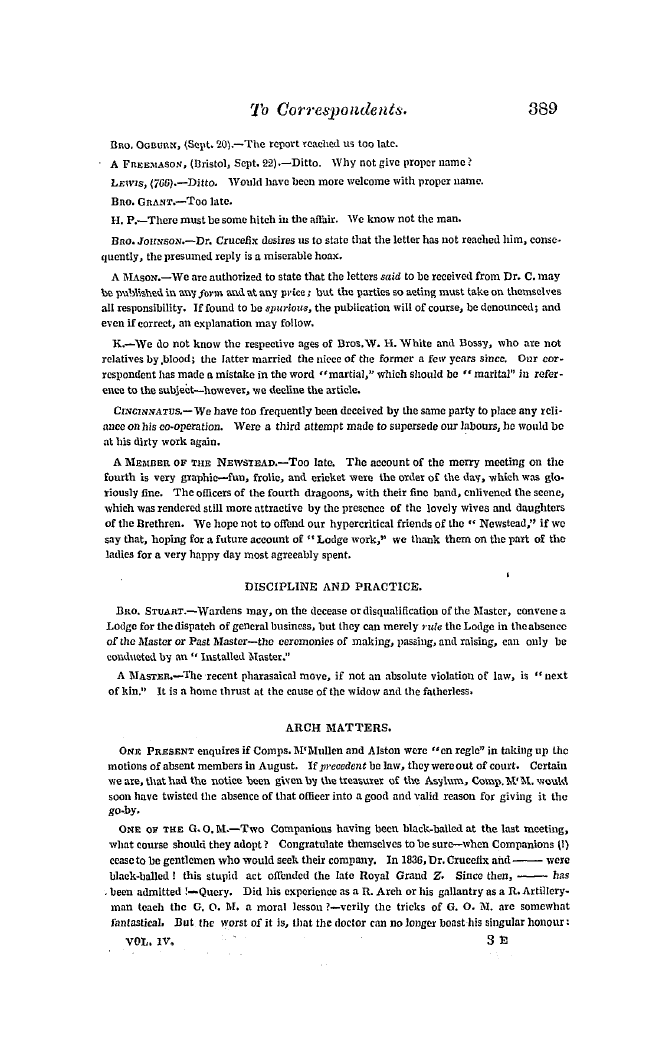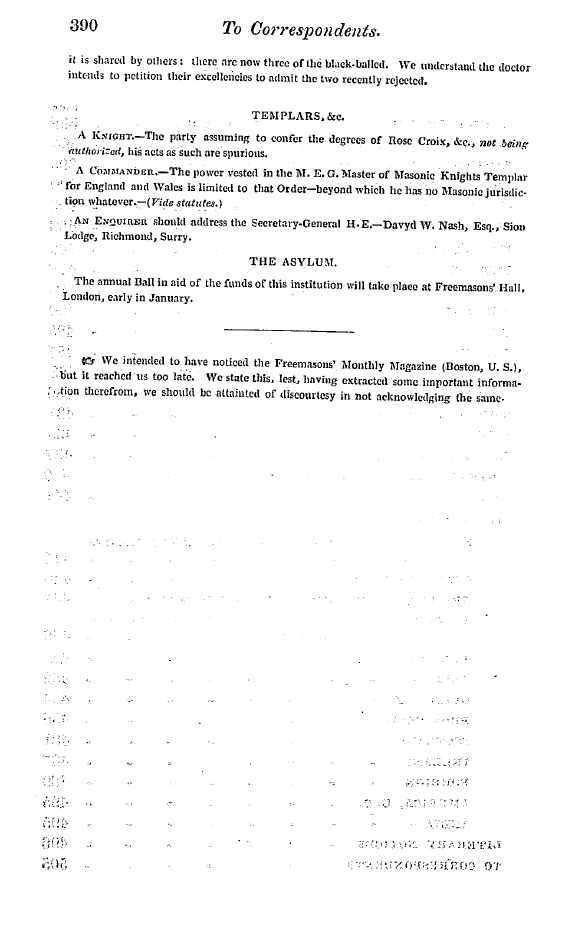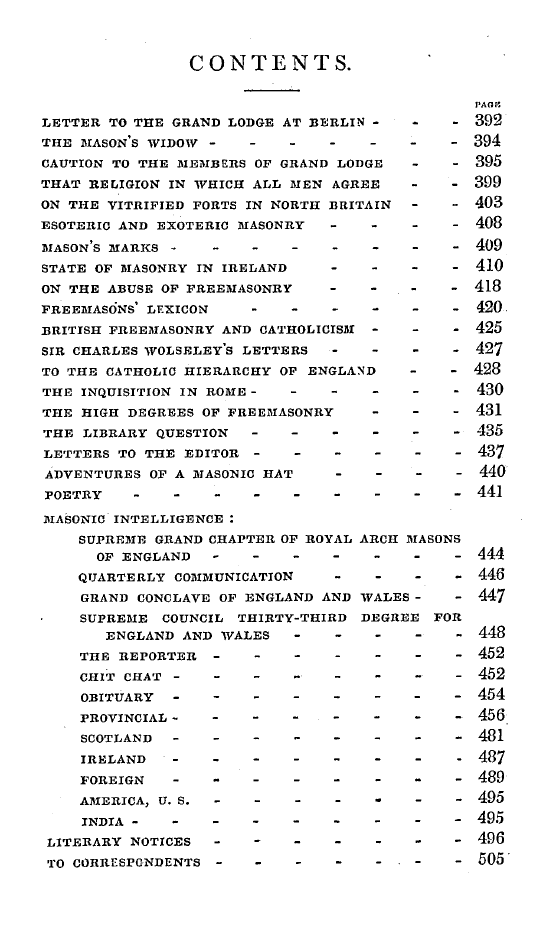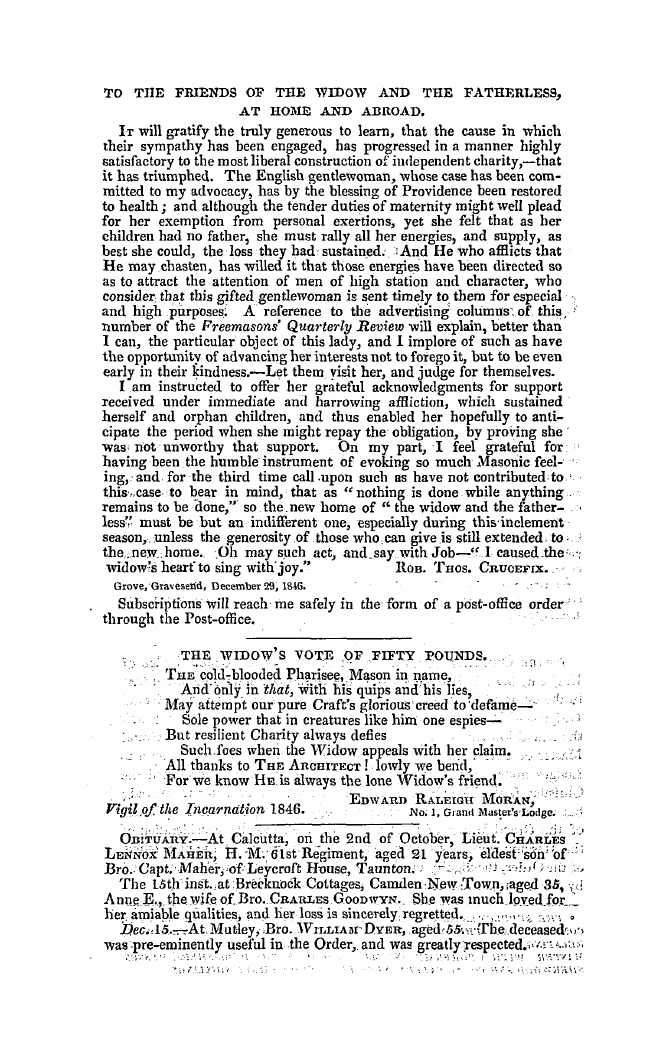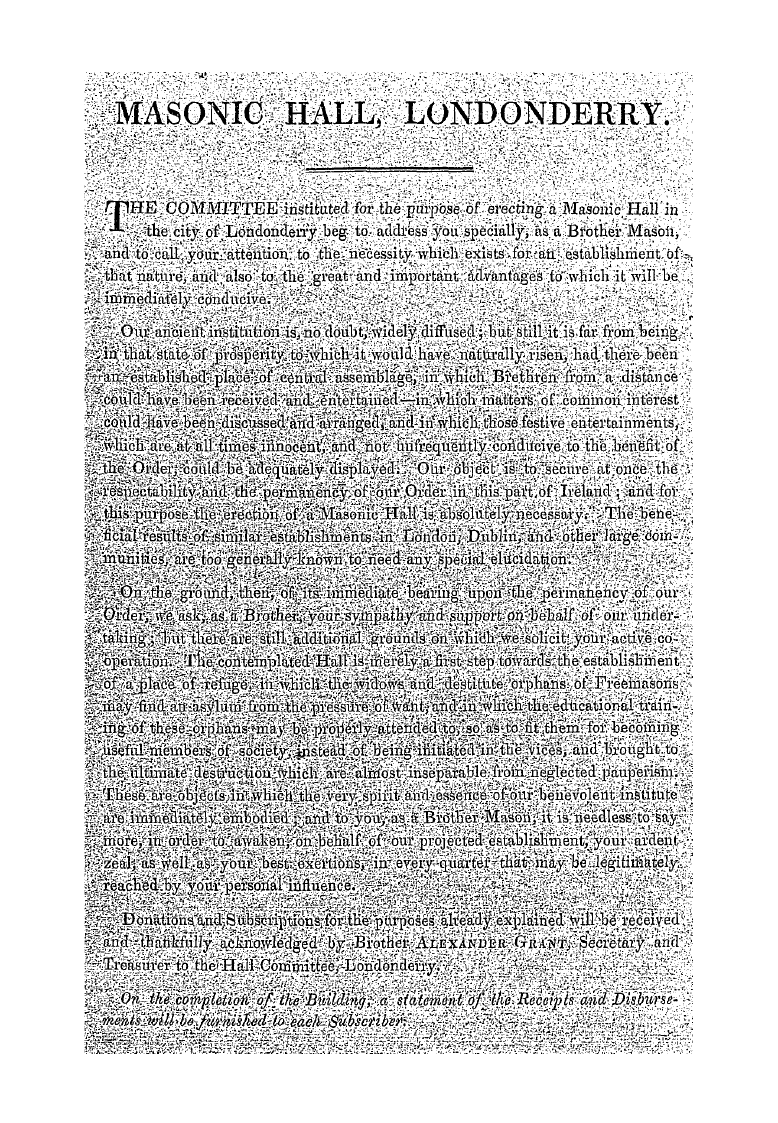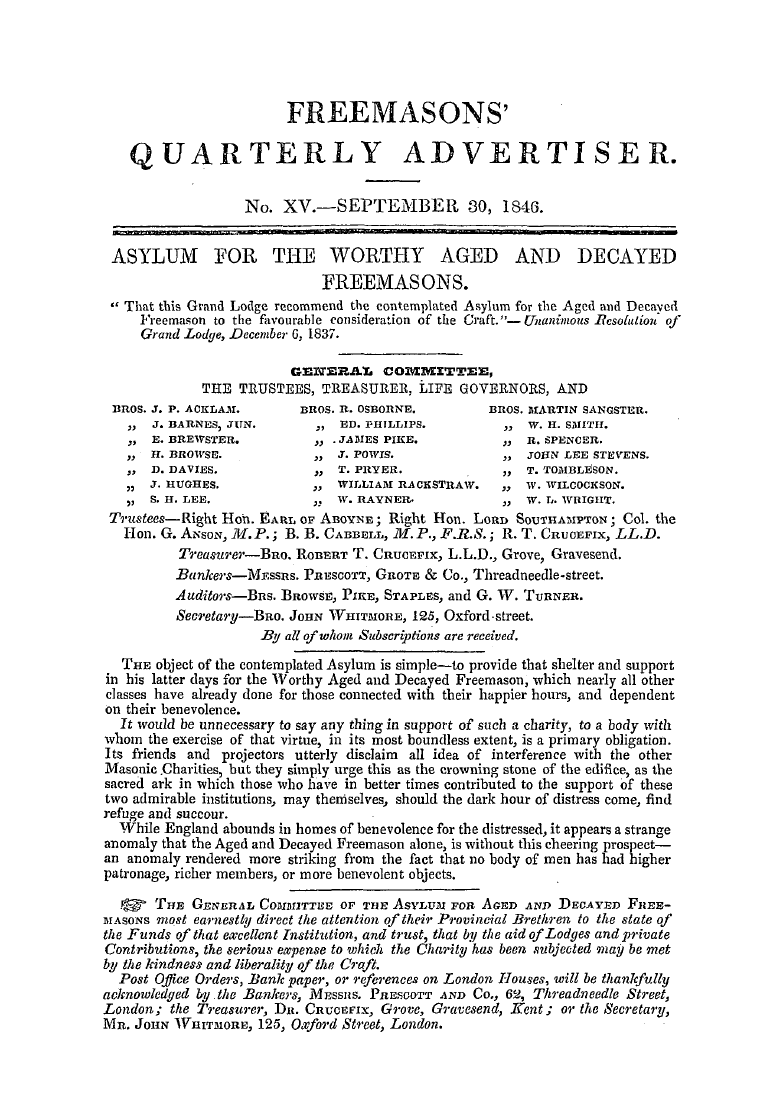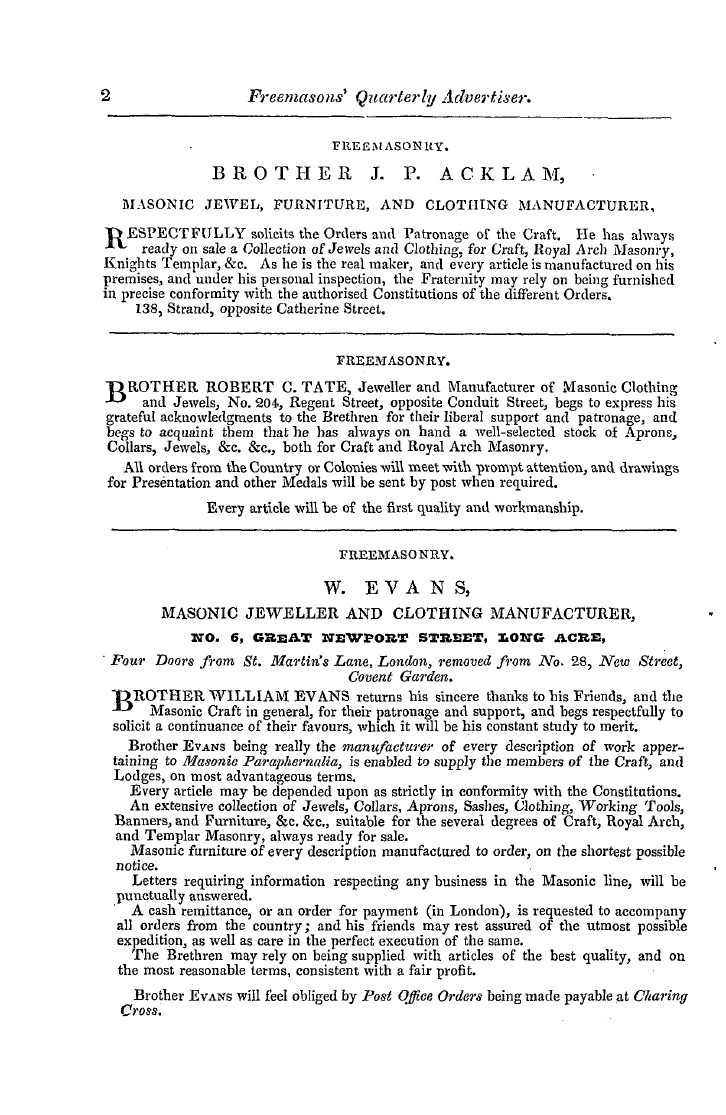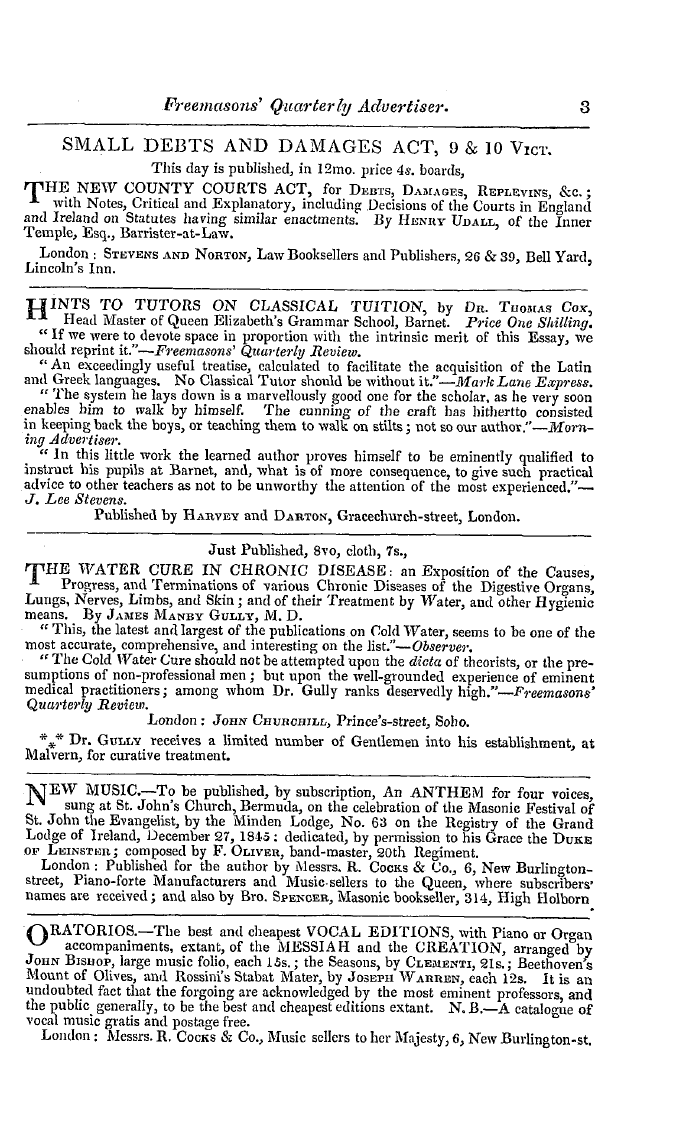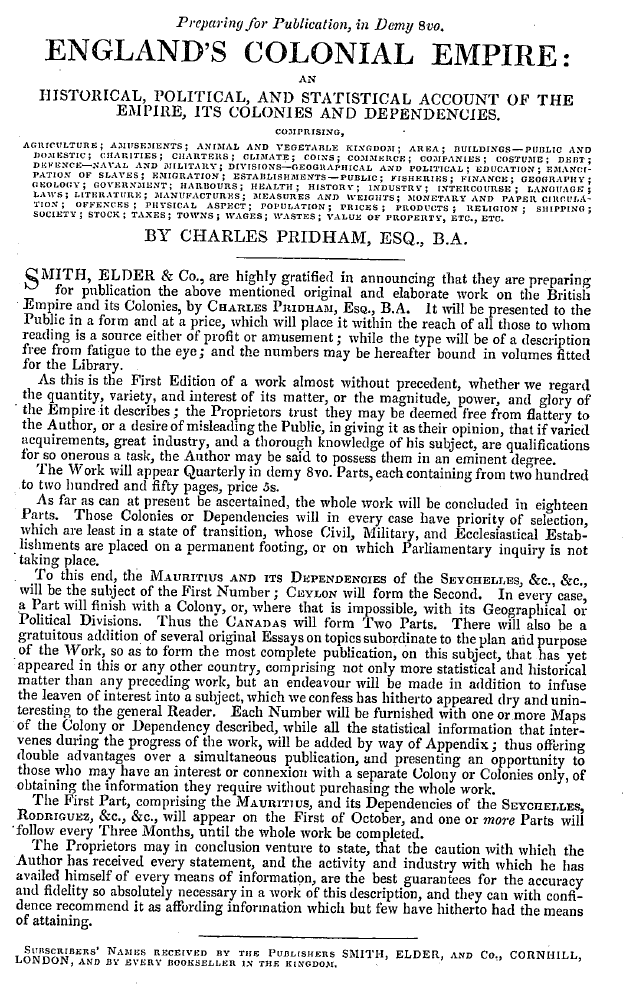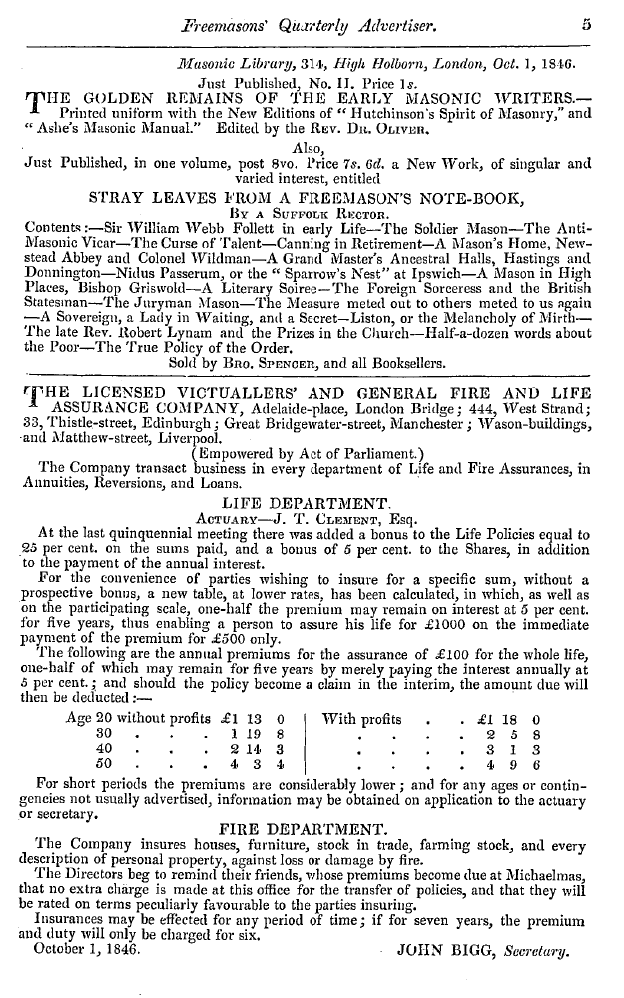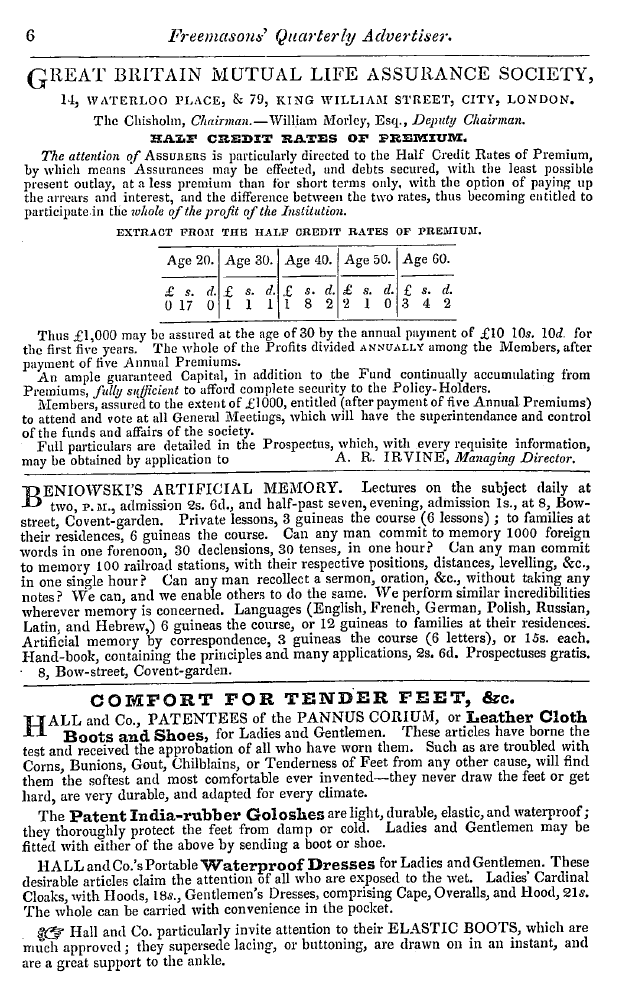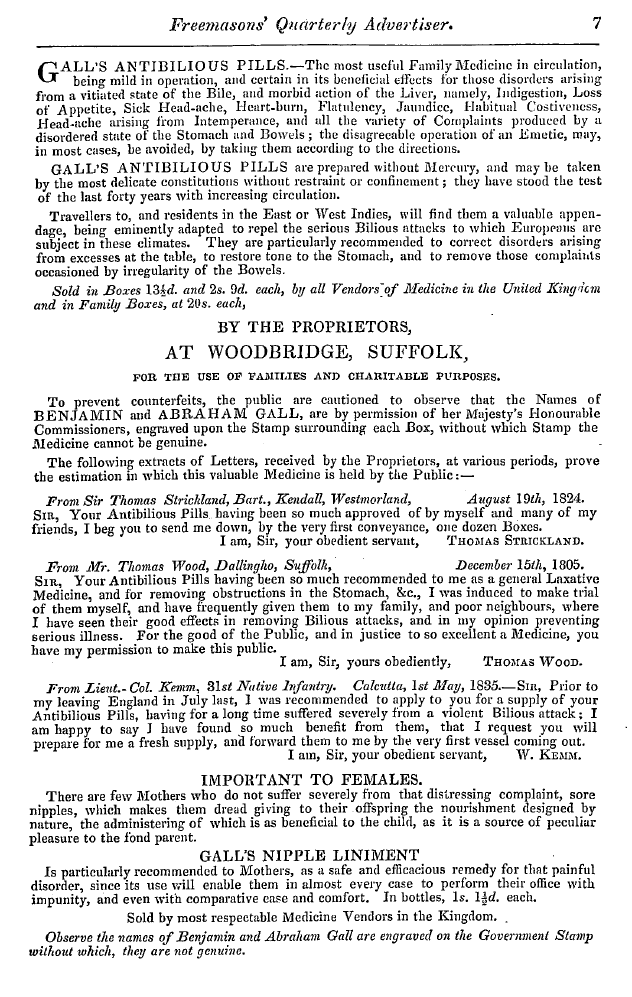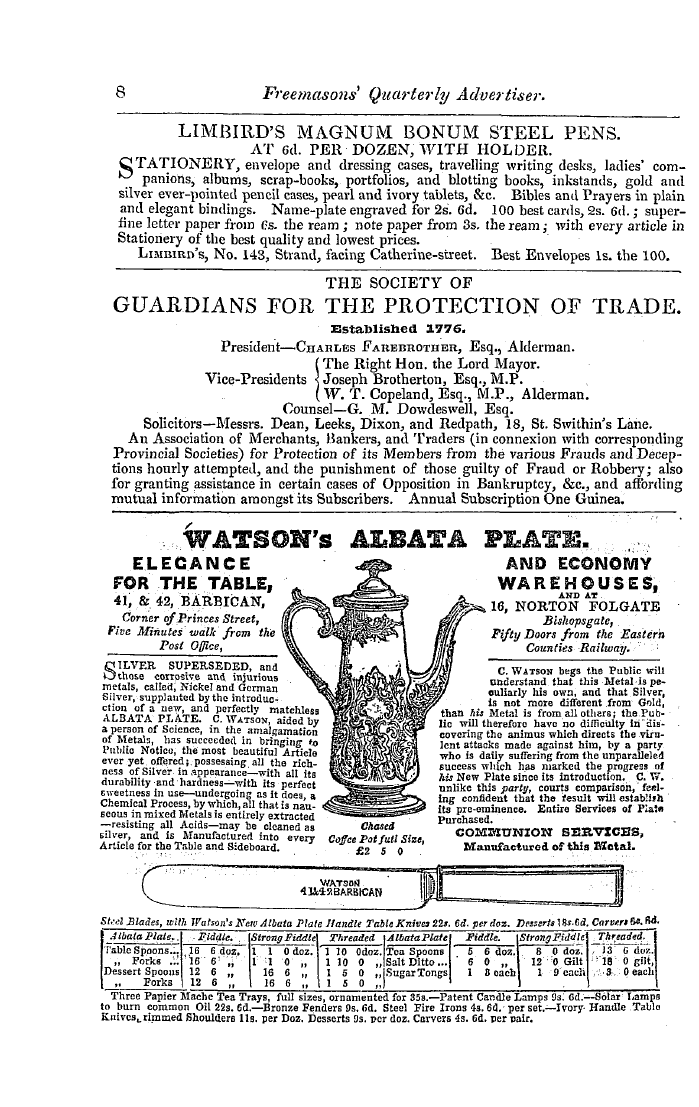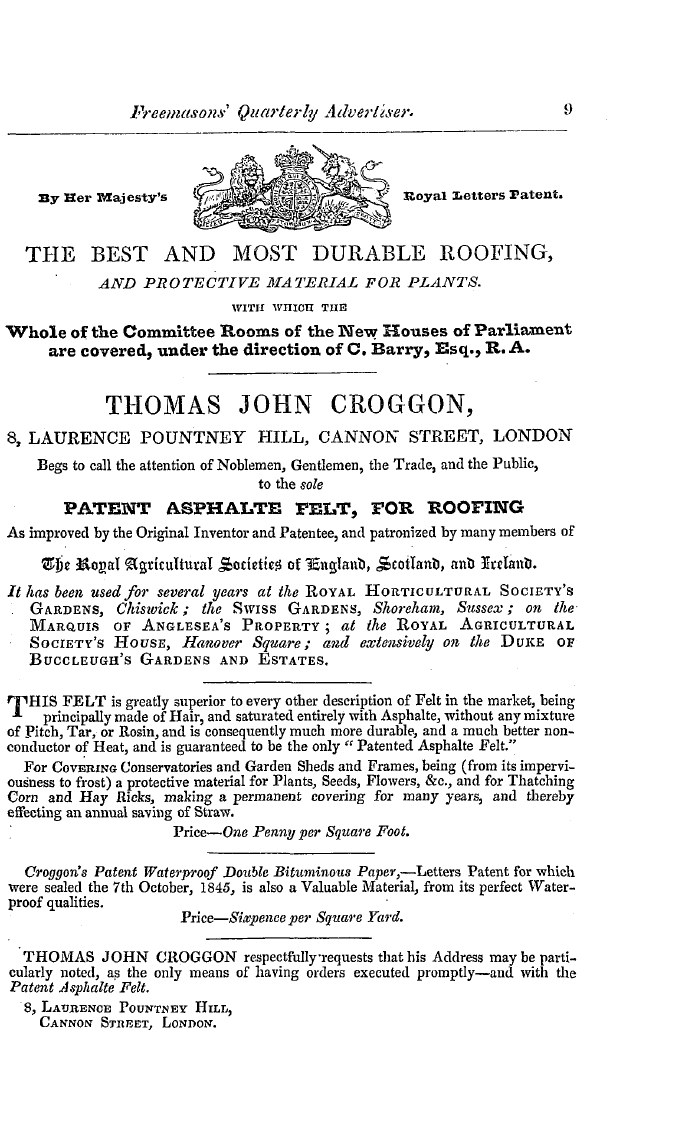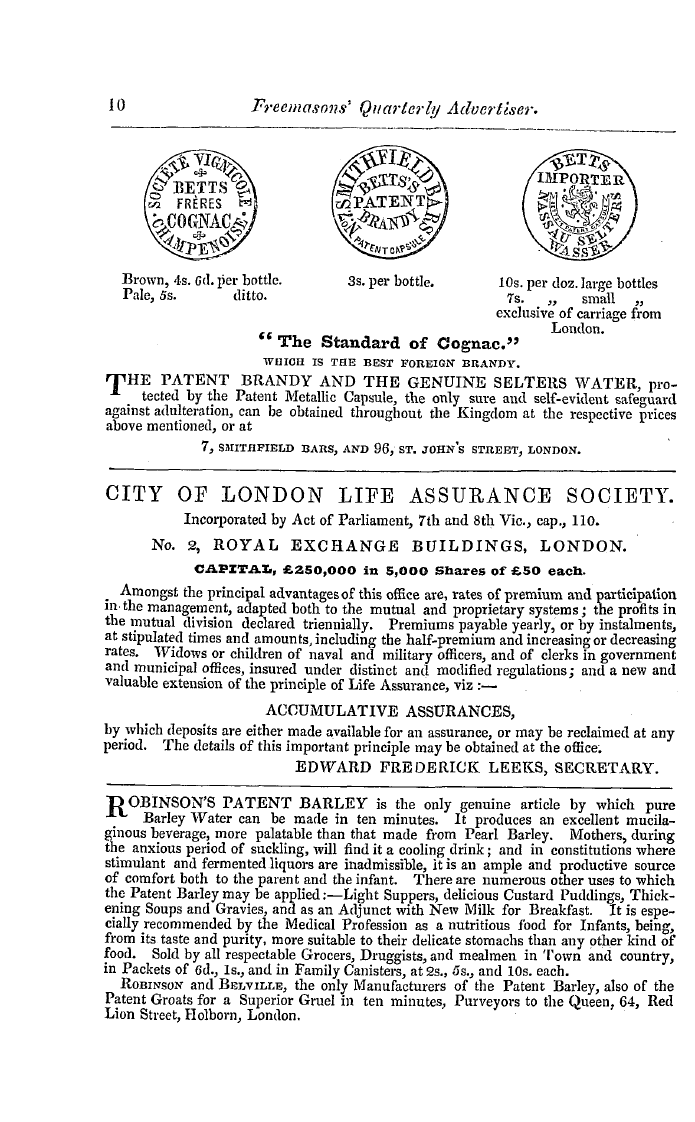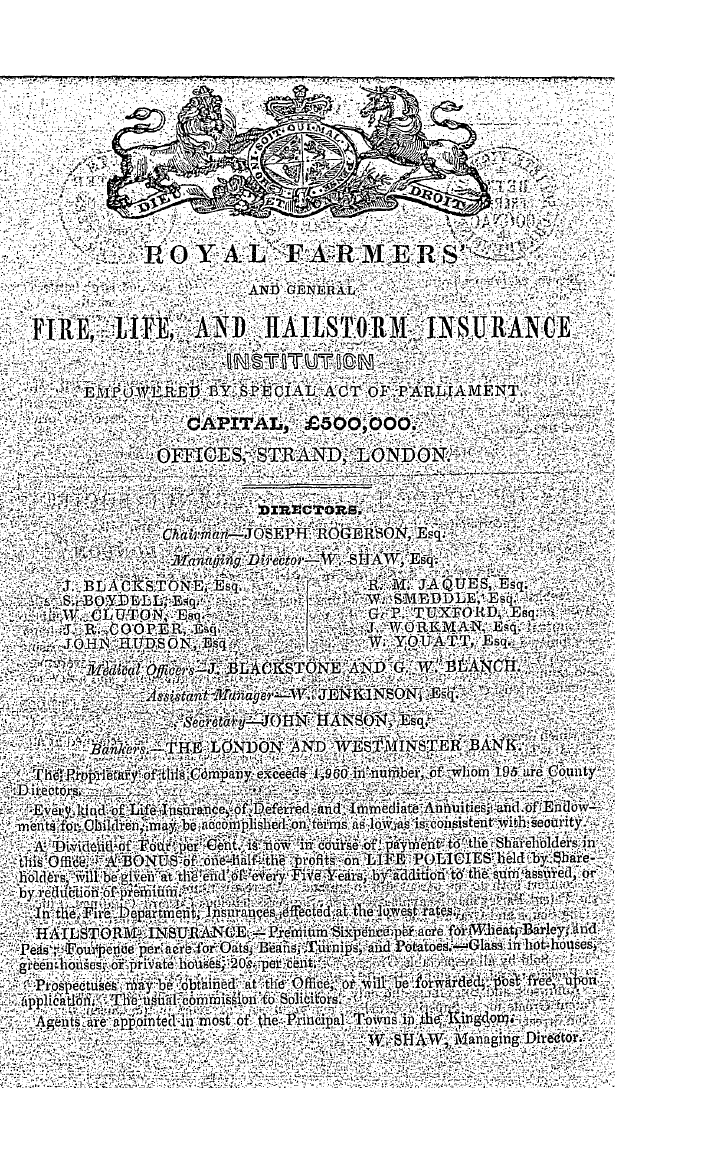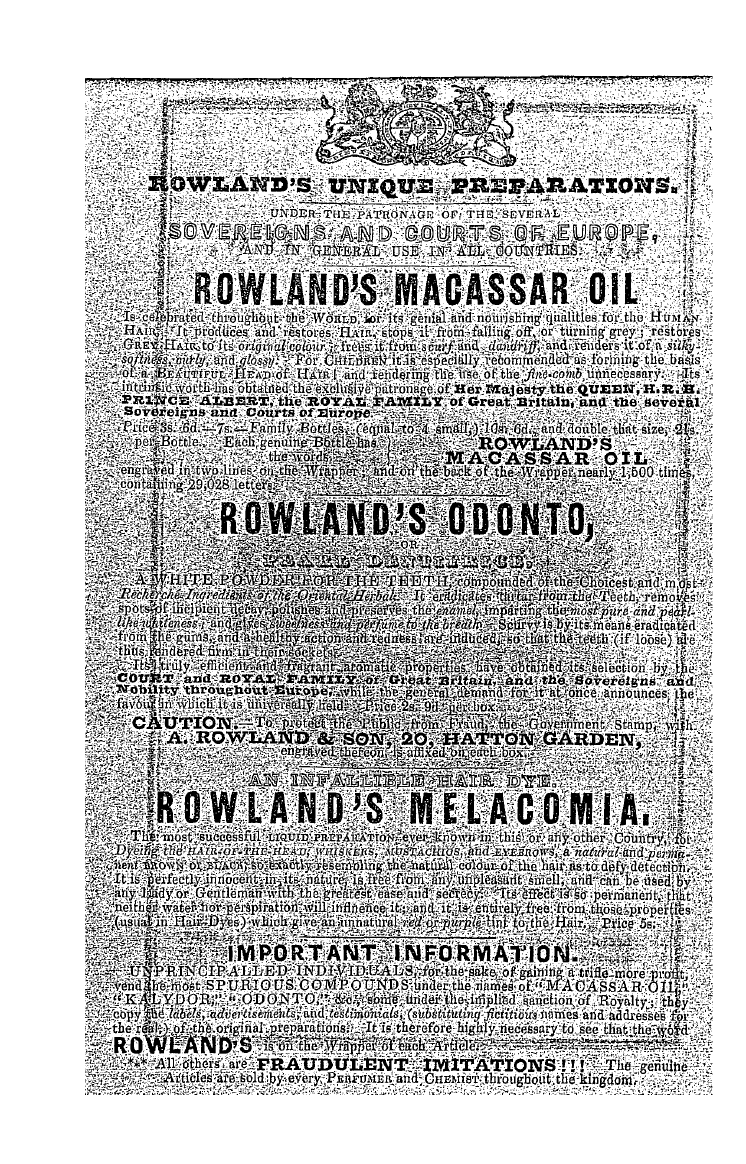-
Articles/Ads
Article ON THE ANTIQUITY OF THE OBSERVANCES OF ST. JOHN'S EVE. ← Page 4 of 4 Article THE FREEMASONS' LEXICON. Page 1 of 7 →
Note: This text has been automatically extracted via Optical Character Recognition (OCR) software.
On The Antiquity Of The Observances Of St. John's Eve.
architecture , and usages , existing between tbe " green isle" and Asia ; and the Cabiric religion has left vestiges in Ireland , by which a connection at a remote period between that country and India , through Chaltlea ancl Persia , can be satisfactorily traced . It may seem somewhat remarkable that the usages of paganism should not have been entirely eradicated upon the introduction of Christianity . It is known , however , that the early Christian missionaries taught at
first in those places which the people hacl been long accustomed to hold in reverence , and afterwards consecrating the spot to holier rites , erected the first Christian churches in the immediate precincts of the Pagan temple ; and thus we see at the present time the temple of the sun , the ancient ruined tower , the Christian abbey , and the modern chapel , all clustered together in the same hallowed spot ; and this occurs in almost every instance where a round tower or ancient abbey is to be found .
In like manner the usages alluded to ( as is evident from their existence continuing to the present clay ) , were not attempted to be entirely or suddenly suppressed , but being , after the introduction of Christianity , no longer practised under the sanction of the priesthood , nor considered as essential ceremonials , they were thus deprived of all religious reference , and gradually lost tlieir previous importance . Still some portions of the ceremonies continued to be observed by the peopleandin
con-, , sequence of the dedication of Midsummer-day to St . John , the preceding eve became once more a holy vigil , and this circumstance no doubt served in some degree to give permanency to the ancient customs . Thus , then , is traced the origin of a superstition still lingering amongst us , —an origin dating from the most remote ages ; ancl though the rising of " the sun of righteousness" has dispelled the mists of paganismthe ancient observances of this period have continued so
, firmly impressed upon the popular mind , that fires still blaze from the hills on the eve of St . John , and the efficacy of the hour is tested by our peasantry in many a harmless rite and simple device , the results of which are still regarded with anxious interest , not unmingled with feelings akin to superstitious reverence .
The Freemasons' Lexicon.
THE FREEMASONS' LEXICON .
( Continued from page ItjG . J Johannes der Evangelist . —St . John the Evangelist ancl Apostle of Jesus , whose gospel is so important to all Freemasons , was born in Bethsaida , in Galilee , a son of Zebediah , and a disciple of Jesus , who loved him because he distinguished himself by his gentleness ancl humility . After the ascension of Jesus he preached the gospel principally in Asia Minor and at Ehesuswhere it is probable that he died in a
p , good old age . He was a man of great energy and poetic fire and life ; in his early years somewhat haughty and intolerant , but afterwards an example of love . We have a gospel or biography of Jesus by him , and three of the epistles also bear his name . The opinions of the ancients as to his being the author of the apocalypse or revelations , were as various as are the opinions of the moderns . The gospel of St . John is especially important to the Freemason , for he preached love , aud his
Note: This text has been automatically extracted via Optical Character Recognition (OCR) software.
On The Antiquity Of The Observances Of St. John's Eve.
architecture , and usages , existing between tbe " green isle" and Asia ; and the Cabiric religion has left vestiges in Ireland , by which a connection at a remote period between that country and India , through Chaltlea ancl Persia , can be satisfactorily traced . It may seem somewhat remarkable that the usages of paganism should not have been entirely eradicated upon the introduction of Christianity . It is known , however , that the early Christian missionaries taught at
first in those places which the people hacl been long accustomed to hold in reverence , and afterwards consecrating the spot to holier rites , erected the first Christian churches in the immediate precincts of the Pagan temple ; and thus we see at the present time the temple of the sun , the ancient ruined tower , the Christian abbey , and the modern chapel , all clustered together in the same hallowed spot ; and this occurs in almost every instance where a round tower or ancient abbey is to be found .
In like manner the usages alluded to ( as is evident from their existence continuing to the present clay ) , were not attempted to be entirely or suddenly suppressed , but being , after the introduction of Christianity , no longer practised under the sanction of the priesthood , nor considered as essential ceremonials , they were thus deprived of all religious reference , and gradually lost tlieir previous importance . Still some portions of the ceremonies continued to be observed by the peopleandin
con-, , sequence of the dedication of Midsummer-day to St . John , the preceding eve became once more a holy vigil , and this circumstance no doubt served in some degree to give permanency to the ancient customs . Thus , then , is traced the origin of a superstition still lingering amongst us , —an origin dating from the most remote ages ; ancl though the rising of " the sun of righteousness" has dispelled the mists of paganismthe ancient observances of this period have continued so
, firmly impressed upon the popular mind , that fires still blaze from the hills on the eve of St . John , and the efficacy of the hour is tested by our peasantry in many a harmless rite and simple device , the results of which are still regarded with anxious interest , not unmingled with feelings akin to superstitious reverence .
The Freemasons' Lexicon.
THE FREEMASONS' LEXICON .
( Continued from page ItjG . J Johannes der Evangelist . —St . John the Evangelist ancl Apostle of Jesus , whose gospel is so important to all Freemasons , was born in Bethsaida , in Galilee , a son of Zebediah , and a disciple of Jesus , who loved him because he distinguished himself by his gentleness ancl humility . After the ascension of Jesus he preached the gospel principally in Asia Minor and at Ehesuswhere it is probable that he died in a
p , good old age . He was a man of great energy and poetic fire and life ; in his early years somewhat haughty and intolerant , but afterwards an example of love . We have a gospel or biography of Jesus by him , and three of the epistles also bear his name . The opinions of the ancients as to his being the author of the apocalypse or revelations , were as various as are the opinions of the moderns . The gospel of St . John is especially important to the Freemason , for he preached love , aud his


























































